If you’ve never visited Washington D.C. before, then there is a high chance you’ll find yourself at The National Mall, even without thinking about it.
And no, it’s not a shopping mall, but a vast T-shaped complex made up of several parks, monuments, and museums. On one side, you have The White House, the home to the U.S. President, and on the other, a majestic tidal basin that connects to the Potomac River.
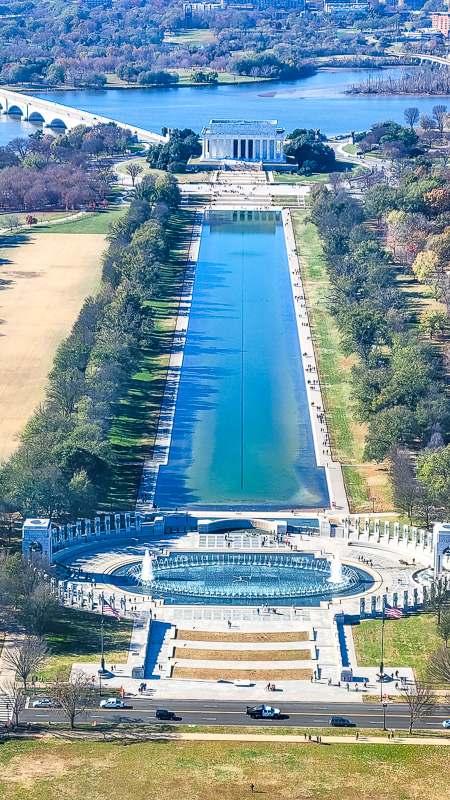
To the West, there’s The Lincoln Memorial, an iconic landmark of America, which looks over the whole mall and towards the U.S. Capitol Building that sits on Capitol Hill on the East.
There’s so much to see and do on The National Mall, it can be overwhelming knowing where to start.
But don’t worry, because this complete guide to The National Mall in Washington D.C. will tell you everything you need to know about visiting this important attraction in D.C.
- What is The National Mall?
- What is the best way to get around the National Mall?
- 33 Top Attractions On The National Mall
- 1. Abraham Lincoln Memorial & Lincoln Memorial Reflecting Pool
- 2. Vietnam Veterans Memorial
- 3. Constitution Gardens and Signers’ Memorial
- 4. The Washington Monument
- 5. German-American Friendship Garden
- 6. The White House
- 7. National Museum of African American History and Culture
- 8. Smithsonian National Museum of American History
- 9. Smithsonian National Museum of Natural History
- 10. National Gallery of Art
- 11. Peace Monument
- 12. Ulysses S. Grant Memorial
- 13. U.S. Capitol
- 14. Supreme Court of the United States
- 15. Library of Congress
- 16. United States Botanic Garden
- 17. National Native American Veterans Memorial
- 18. National Museum of the American Indian
- 19. Smithsonian National Air and Space Museum
- 20. Hirshhorn Museum
- 21. Smithsonian National Museum of African Art
- 22. Smithsonian Castle
- 23. National Museum of Asian Art
- 24. National Sylvan Theater
- 25. United States Holocaust Memorial Museum
- 26. John Paul Jones Memorial
- 27. World War II Memorial
- 28. Martin Luther King Jr. Memorial
- 29. Korean War Veterans Memorial
- 30. John Ericsson Memorial
- 31. George Mason Memorial
- 32. Franklin D Roosevelt Memorial
- 33. Thomas Jefferson Memorial
- FAQs About Visiting The National Mall
- Before You Go
- Where to Stay in Washington DC
- More Washington DC Travel Tips
What is The National Mall?
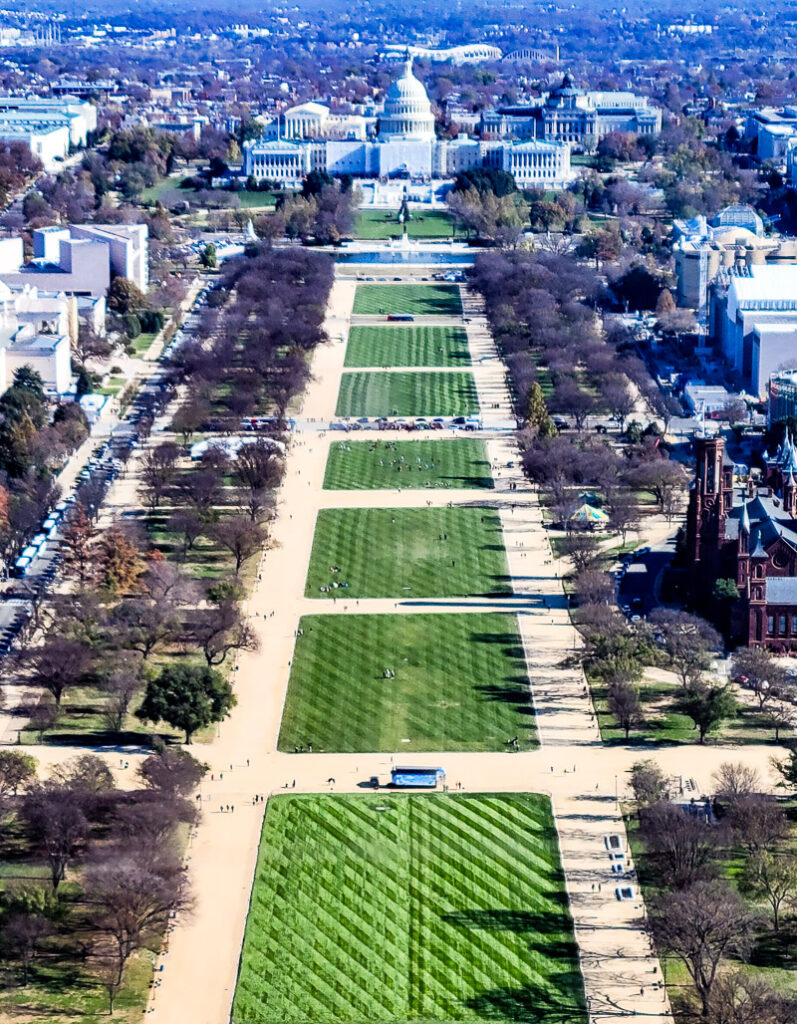
The National Mall is a huge landscaped park near downtown Washington D.C. and comprises monuments, museums, and parks. It connects many of the city’s top attractions and landmarks.
It’s a space for the local people to relax, contemplate and enjoy daily recreation. The park was the space that inspired many of the United State’s most notable people, such as being where Martin Luther King Jr. gave his speech “I Have A Dream” and where many presidents had their inaugurations.
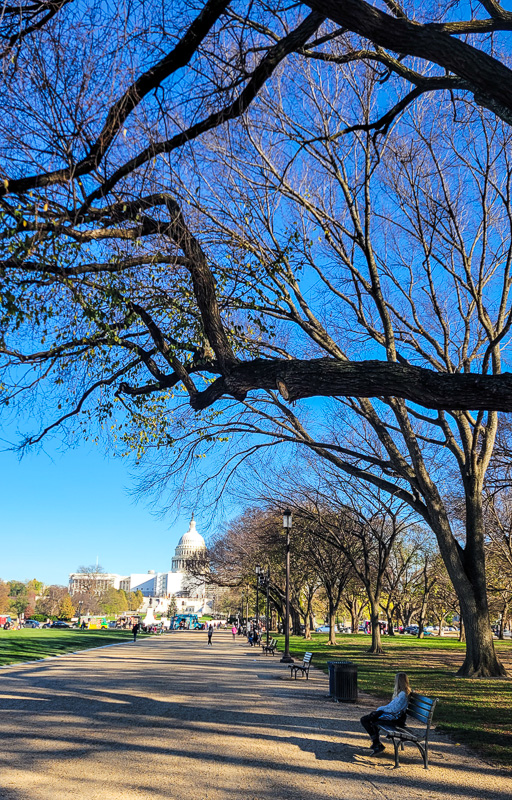
So, why is it called the National Mall in Washington, DC? The name “The Mall” refers to The Mall in London, which is a promenade opposite Buckingham Palace where the city’s upper class would walk.
The Mall in London was built in the 1700s, and The National Mall was built in 1791.
What is the best way to get around the National Mall?
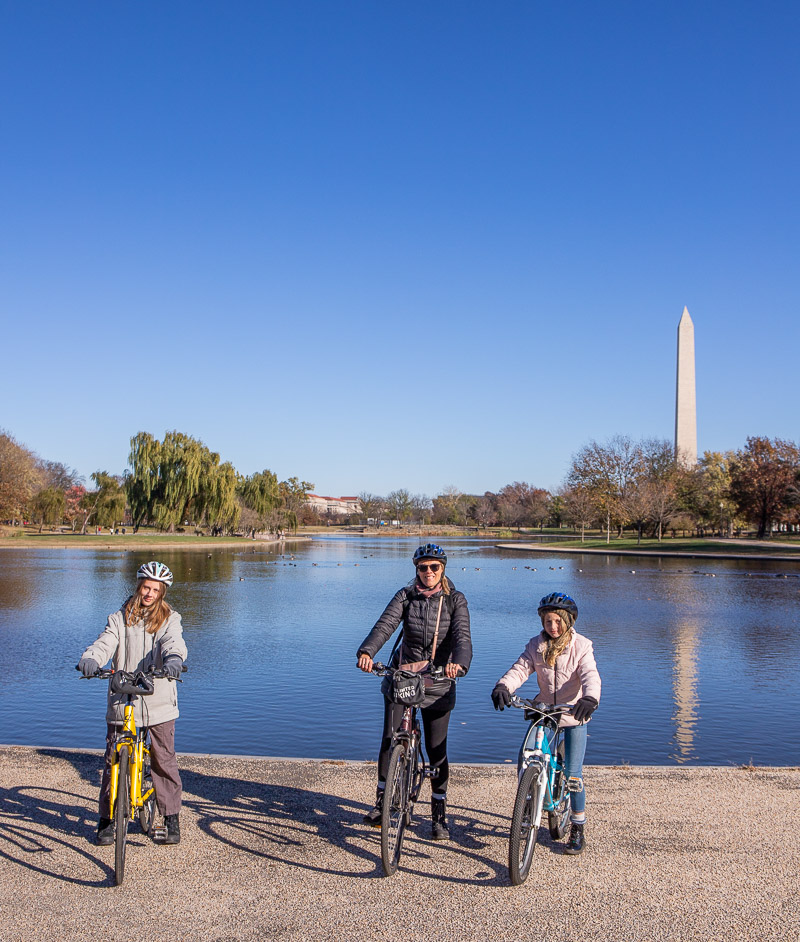
The National Mall is around 309.2 acres in size or a five-mile loop walk. It’s pretty big, and while it’s possible to walk it, it will take around 1.5-2 hours just to walk it without stopping at each monument.
The best way to tour the National Mall is to hire a bike and cycle from attraction to attraction. Not only is it a great way to get to and from each place quickly, but it’s also an experience in itself.
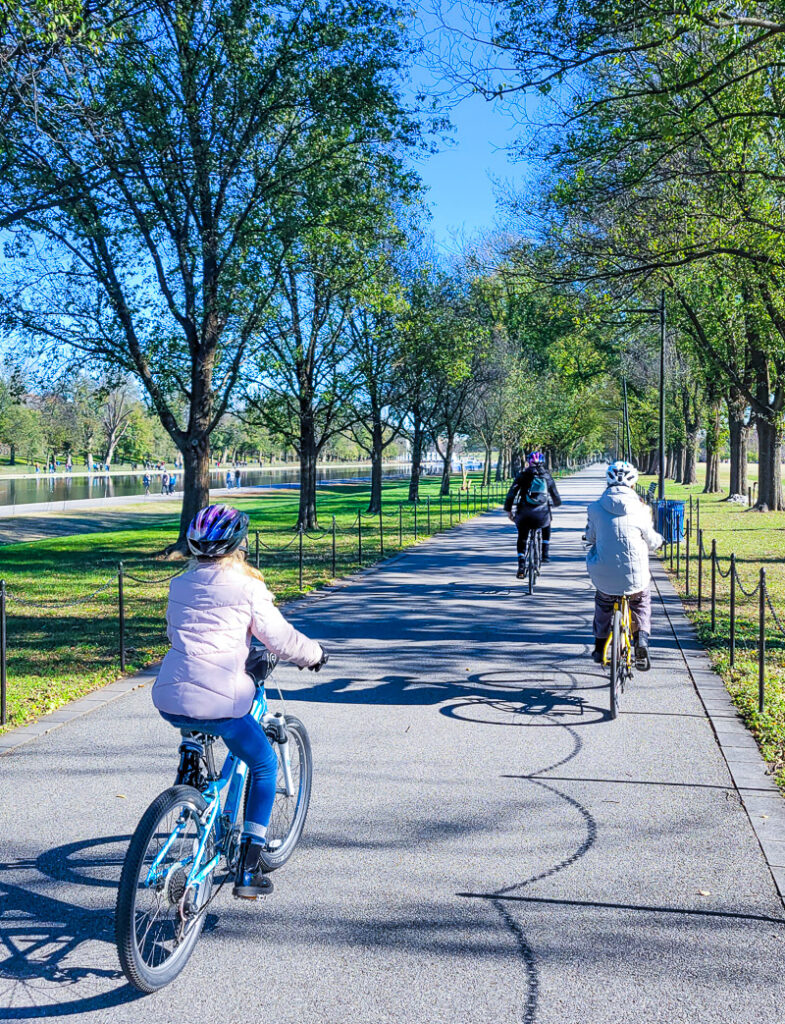
Biking around The National Mall gives you possibly the best views of the mall since you’re right in the thick of it. It’s all flat, so the ride is easy for any member of the family to do.
Many people also take a hop-on hop-off bus, which does a loop around the mall and tidal basin. This is a good option for those who have reduced mobility or cycling isn’t possible. There are also guided tours you can join which take you around in a bus.
We only managed to explore half of the Mall on our bikes (between 10am-3pm). We rode around Tidal Basin to the Washington Monument and back stopping at the memorials (including a tour up to the top of Washington Monument) We walked the second half the following day to see the museums.
Book an e-bike before you visit to avoid standing in queues!
33 Top Attractions On The National Mall
The National Mall is a huge complex and is packed full of attractions and things to see.
The below list of attractions on The National Mall is listed in order of East to West, going in a clockwise loop. Of course, you can visit each of these attractions in any order you like.
Some of the most popular Mall attractions may require timed entry passes. So do your due diligence so you don’t miss visiting.
1. Abraham Lincoln Memorial & Lincoln Memorial Reflecting Pool
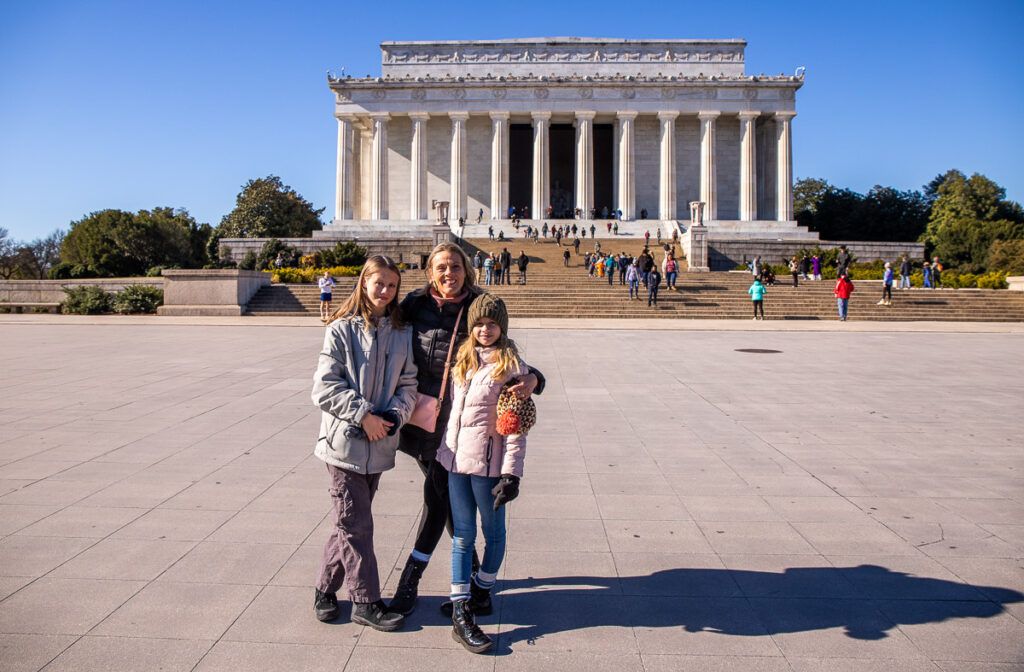
One of the most famous memorials in the world is the Lincoln Memorial, known for its white, larger-than-life marble statue of President Abraham Lincoln sitting in a chair, looking out over the Reflecting Pool towards the Washington Monument.
The memorial also includes two large murals depicting key scenes from Lincoln’s life, as well as several inscriptions of his most famous speeches.
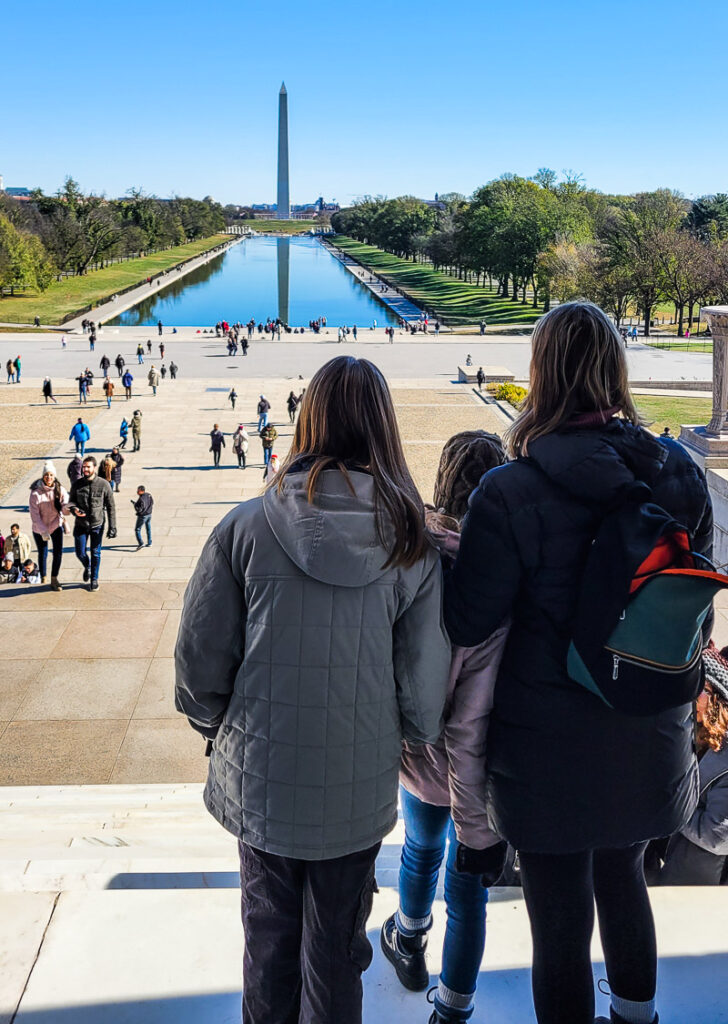
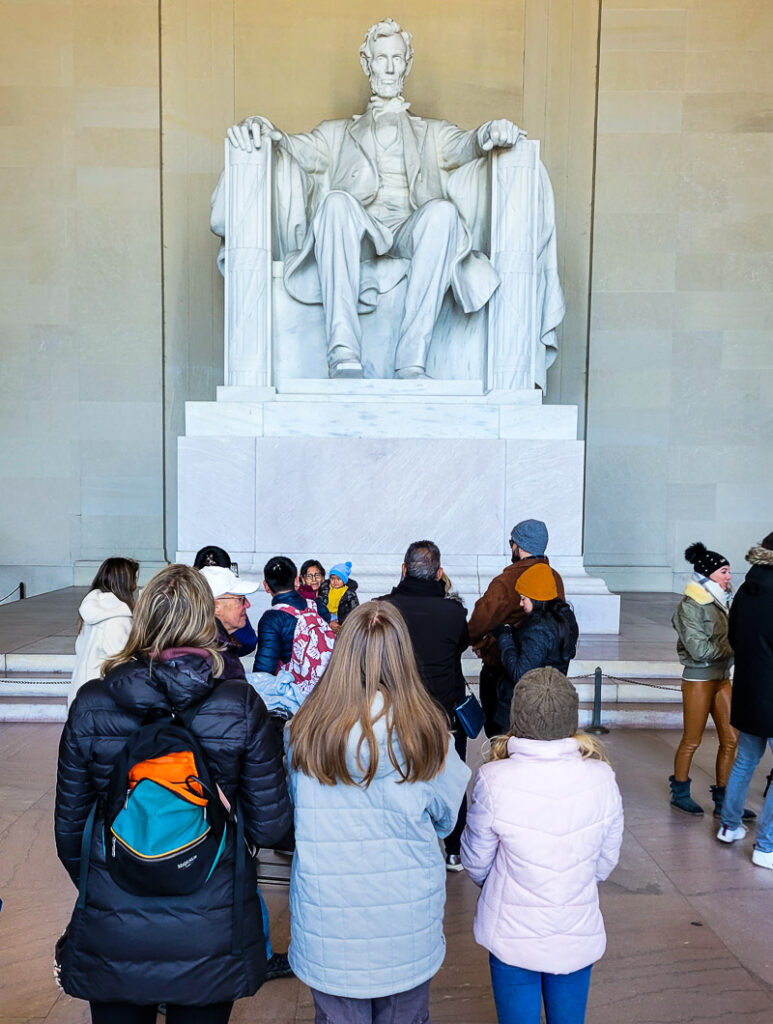
This is one of the best views in Washington D.C. Take some time to sit on the steps and reflect on what Lincoln stood for and the contributions he made to the country.
2. Vietnam Veterans Memorial
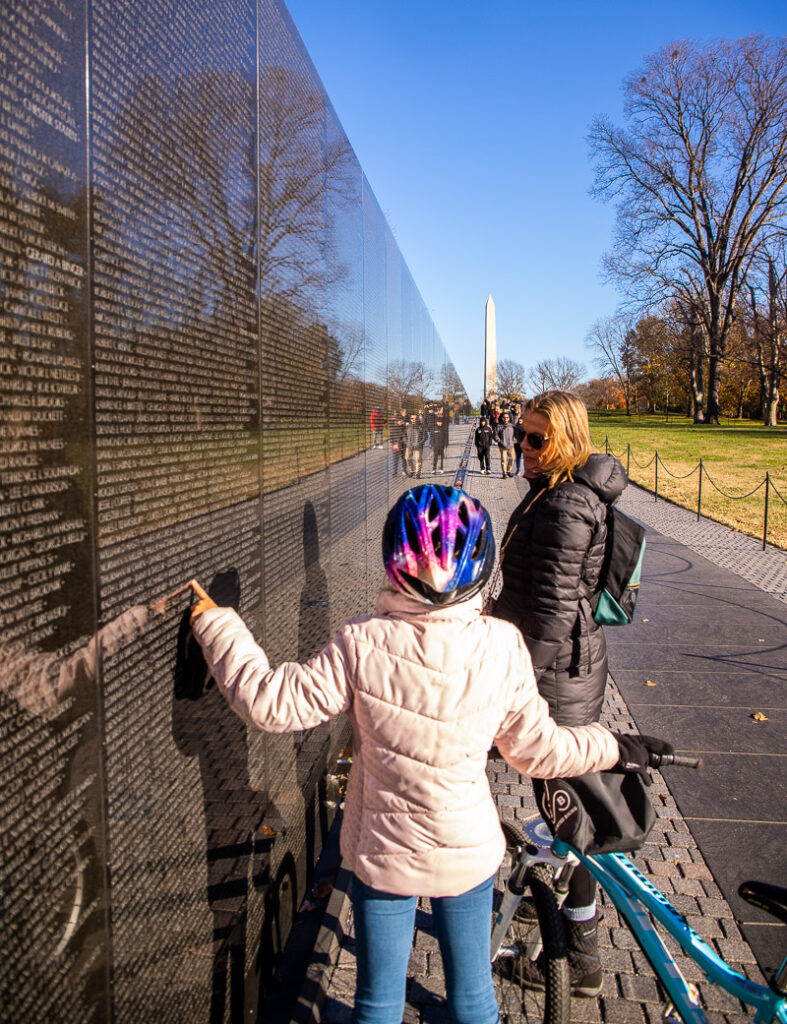
The Vietnam Veterans Memorial honors service members who died in the Vietnam War. The memorial was built in 1982, and it features two black granite walls inscribed with the names of over 58,000 soldiers who died in the conflict.
The memorial is a place of remembrance and healing, and it serves as a reminder of the sacrifices made by so many during the Vietnam War.
Each year, on Veterans Day, a wreath-laying ceremony is held at the memorial to honor the brave men and women who served our country.
I find this the most emotionally moving of the memorials.
3. Constitution Gardens and Signers’ Memorial
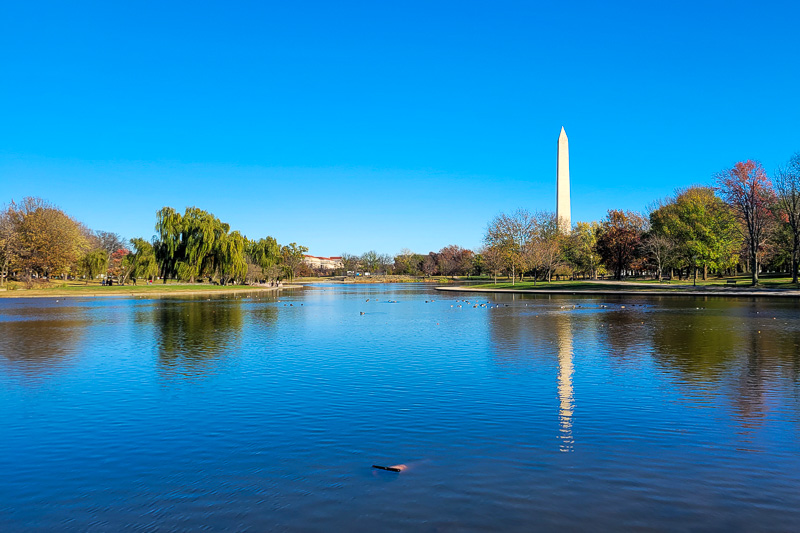
The Constitution Gardens and Signers’ Memorial in Washington D.C. are two beautiful and inspiring sites that commemorate some of the most important moments in American history.
The Constitution Gardens were built in 1815 to celebrate the bicentennial independence of the United States, and they feature a lovely pond flanked by weeping willows.
The Signers’ Memorial is located nearby and was built in 1976 to honor the men who signed the Declaration of Independence, which was signed exactly 200 years before the memorial was built.
Both of these monuments are reminders of the sacrifices made by the U.S. forefathers and serve as a reminder of the importance of upholding the values upon which the country was founded.
Read More: An East Coast Revolutionary War Road Trip
4. The Washington Monument
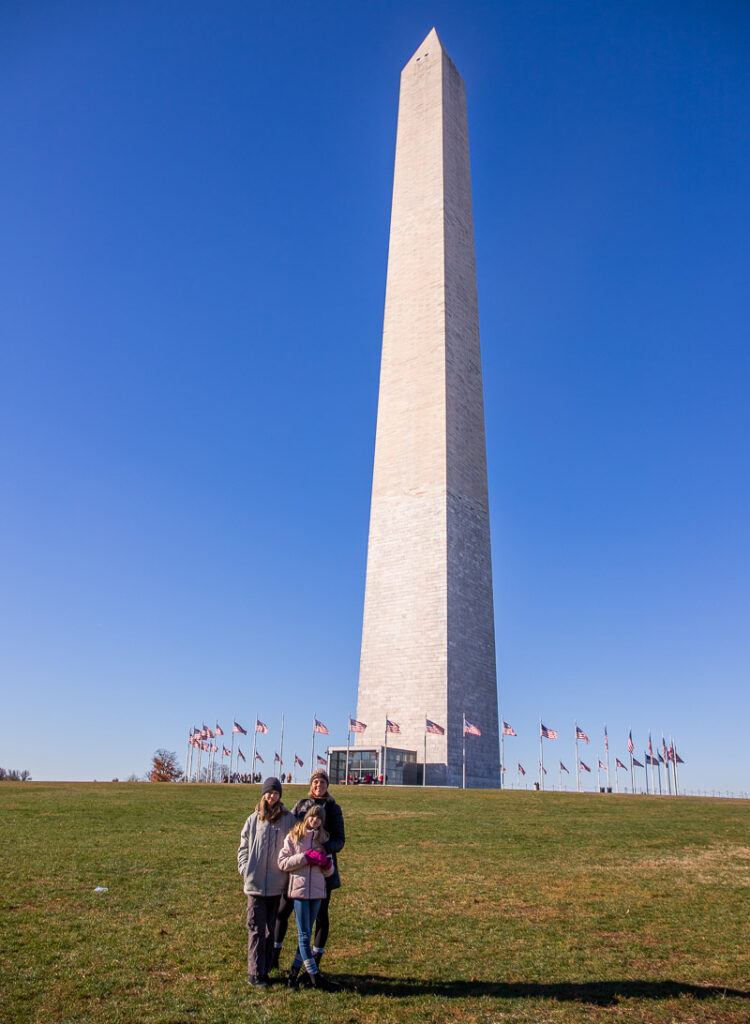
The Washington Monument is possibly the most famous memorial on The National Mall. It’s recognisable for its obelisk, which honors America’s first president, George Washington.
The obelisk was built in 1848 and is the tallest obelisk in the world at just over 555 feet tall.
Visitors can take an elevator up to the observation deck in the obelisk, which provides breathtaking 360-degree views over The National Mall.
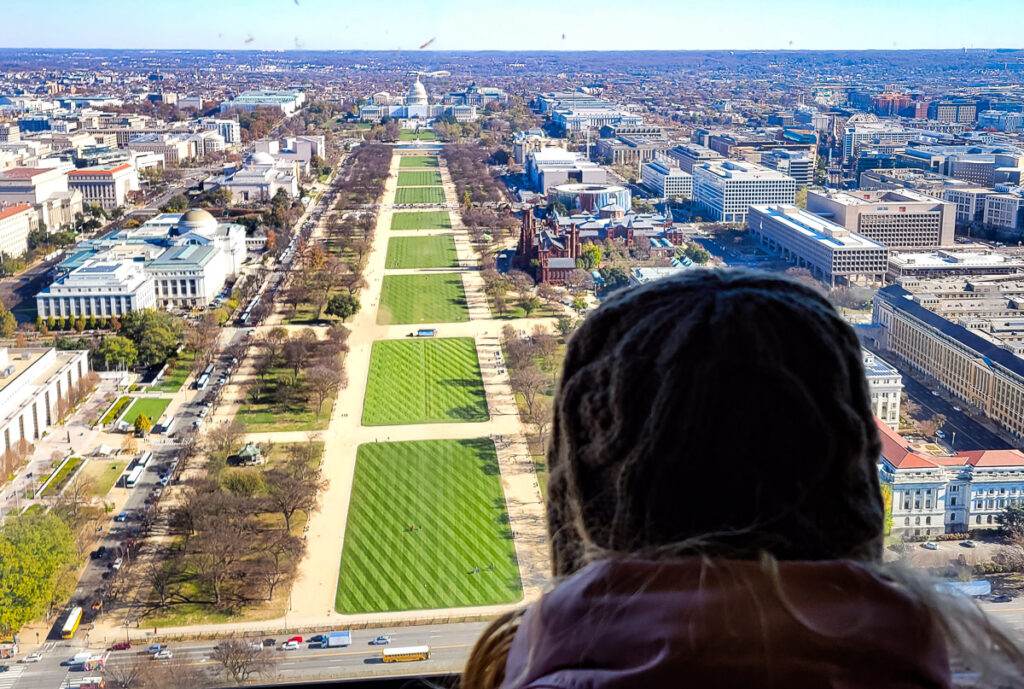
Like most of the monuments, memorials, and museums in Washington, this tour is free. Although, if you book ahead online – and I recommend you do – you will have to pay a $1 booking fee per ticket.
You can either buy tickets exactly 30 days before your intended date, at 10am the day before, or by lining up and getting whatever is left on the day of.
Want to ensure your visit the observation deck? Book your entry ticket in advance here via a guided tour! (They’ve already booked a certain amount of tickets each day.
5. German-American Friendship Garden
The German-American Friendship Garden in Washington D.C. was built to commemorate 300 years of German immigration in America and was dedicated to them in 1988 as a symbol of the close relationship between the two countries.
The garden features a variety of native German and American plant life and is beautiful to visit in the Spring when the cherry blossoms are in bloom.
Visitors to the garden can enjoy a peaceful stroll among the flowers, or relax with a picnic.
The garden is open to the public year-round and provides a welcome respite from the hustle and bustle of city life.
6. The White House
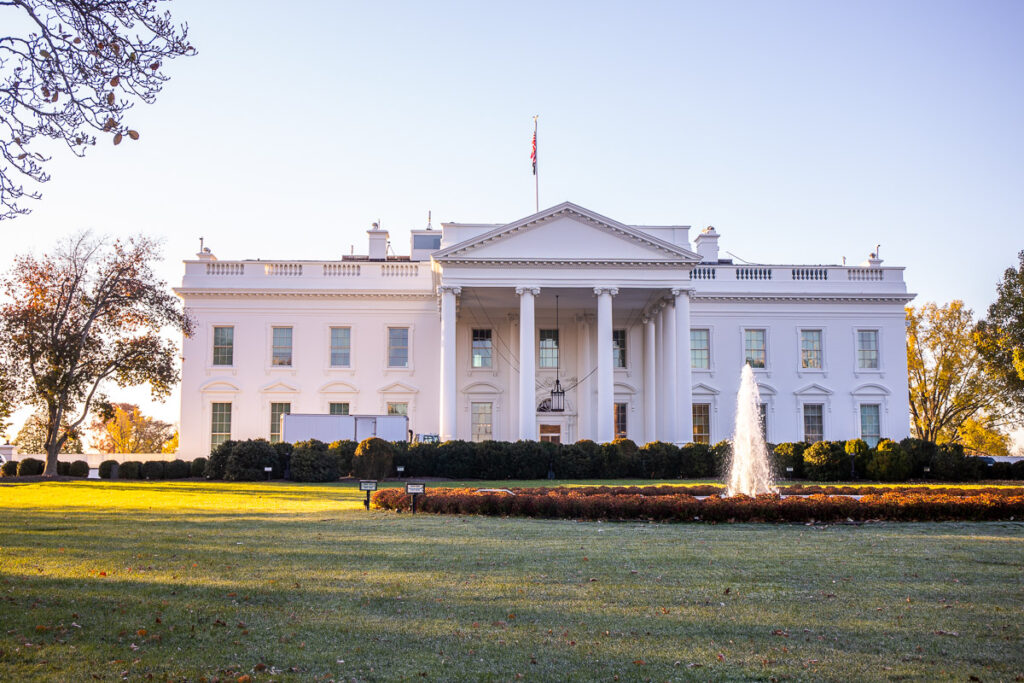
No visit to Washington D.C. would be complete without seeing The White House.
The White House is perhaps the most famous residence in the United States, and it has been the home of every American president since George Washington in 1789-1797.
The White House was originally built in 1792 by architect James Hoban. It was initially known as the Presidential Palace, but it was later renamed the Executive Mansion before finally becoming the White House in 1901.
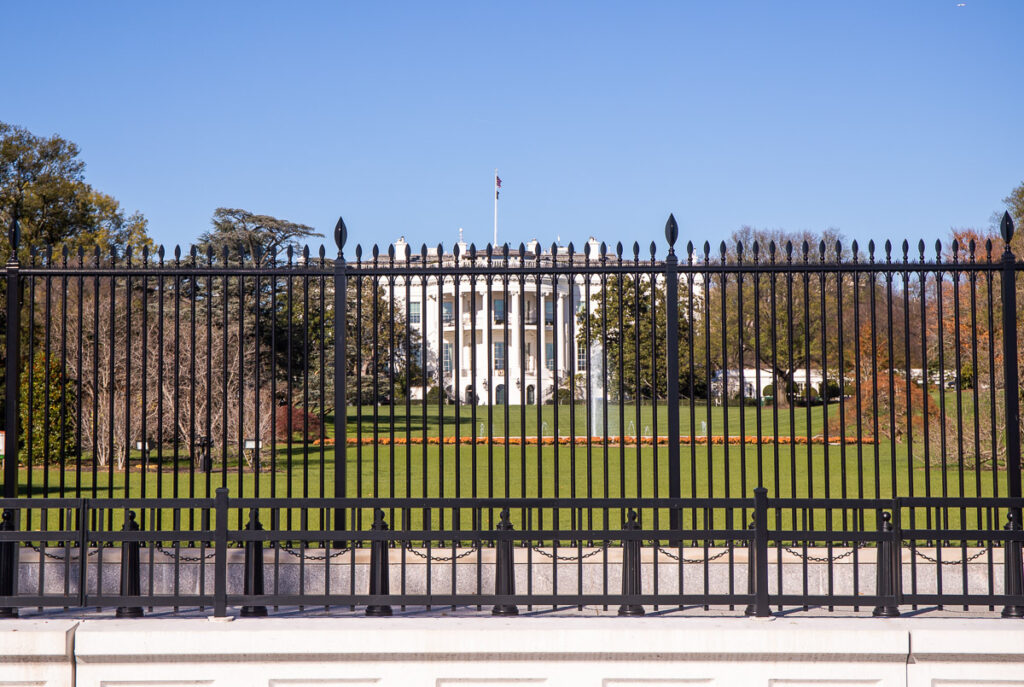
Today, the White House is a symbol of American democracy, and it plays host to a variety of events throughout the year, from state dinners to press conferences.
Visitors can take free tours of the building, which offer a fascinating glimpse into the history of this iconic American institution.
You must reach out to your local representatives to tour the White House, but it must be done at least 21 days in advance and no further than 90 days in advance. International visitors must contact your embassy in Washington, D.C. for assistance in submitting a tour request.
TOP TIP: Go around to the front of the White House on H Street that overlooks Lafayette Square. You can get much closer to the house and get a very different and beautiful view of the White House’s northern façade.
7. National Museum of African American History and Culture
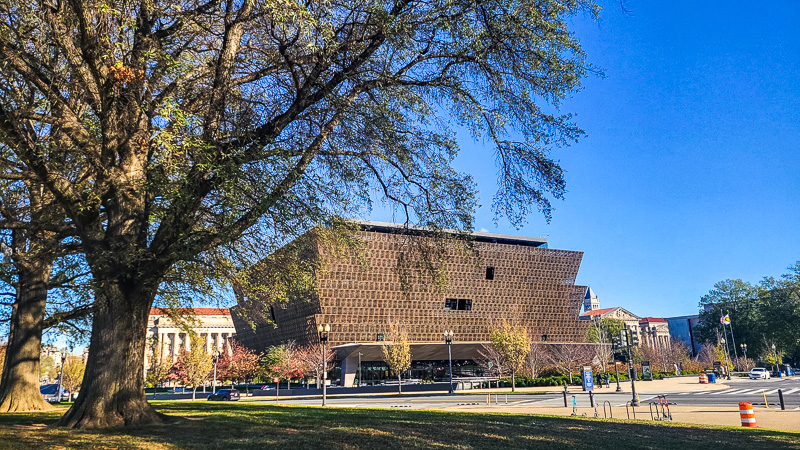
The National Museum of African American History and Culture is a Smithsonian museum that opened to the public on September 24, 2016, and is dedicated to the history, culture, and art of African Americans.
The museum is the only museum dedicated to the documentation and recognition of African American history and culture.
The museum’s collections include items from every era of African American history, from slavery to the present day.
The museum is a powerful reminder of the contributions that African Americans have made to our country, and it is an essential part of understanding America’s history.
This is one of the most popular museums in the national Mall. You will need to reserve your free timed entry passes in advance. If you miss your chance, like we did, you can join this paid guided tour of both these museums which guarantees you entry.
Learn about African Art on this guided walking tour of the museum and other D.C. landmarks.
8. Smithsonian National Museum of American History
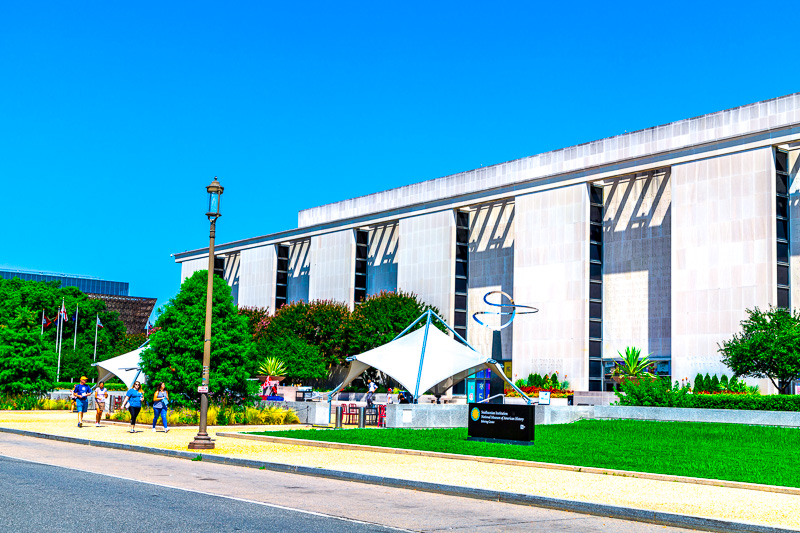
The Smithsonian National Museum of American History and Culture is dedicated to showcasing and preserving American history and culture.
Its grand façade provides an elegant entrance to an incredible collection of 1.8 million artifacts and artworks that tell stories about the history, culture, and experiences of Americans throughout the years.
Some of the most prized possessions in the museum are the original Star-Spangled Banner, Abraham Lincoln’s top hat, and the first artificial heart.
Every visit brings a new sense of appreciation for the remarkable stories of courage, strength, legacy, contribution, achievement, and creativity throughout generations of Americans who have shaped the country’s history.
9. Smithsonian National Museum of Natural History
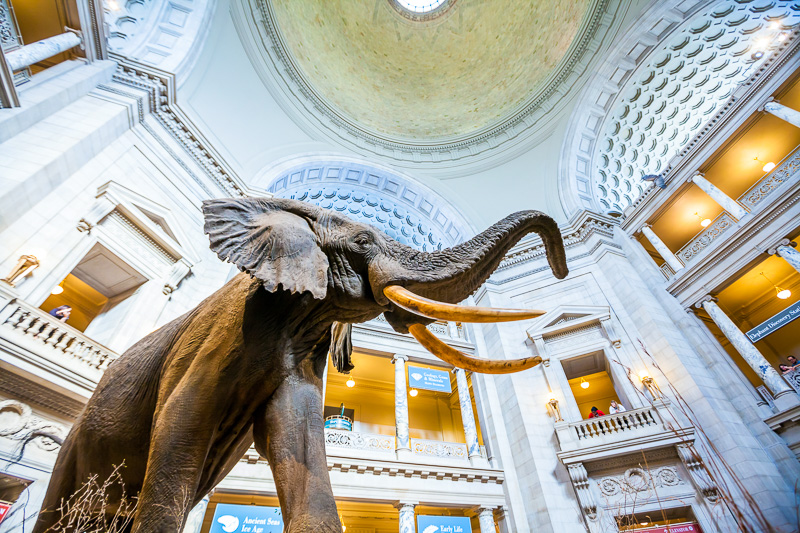
Those in love with studying the processes of life will want to follow our planet’s story from its fiery beginnings through billions of years of transformation at the National Museum of Natural History.
Be prepared for its ginormous size – as big as 18 football fields – filled with more than 140 million natural science specimens and famous artifacts like the Hope Diamond. Teens and tweens will love the lab where they can make their own scientific discoveries.
10. National Gallery of Art
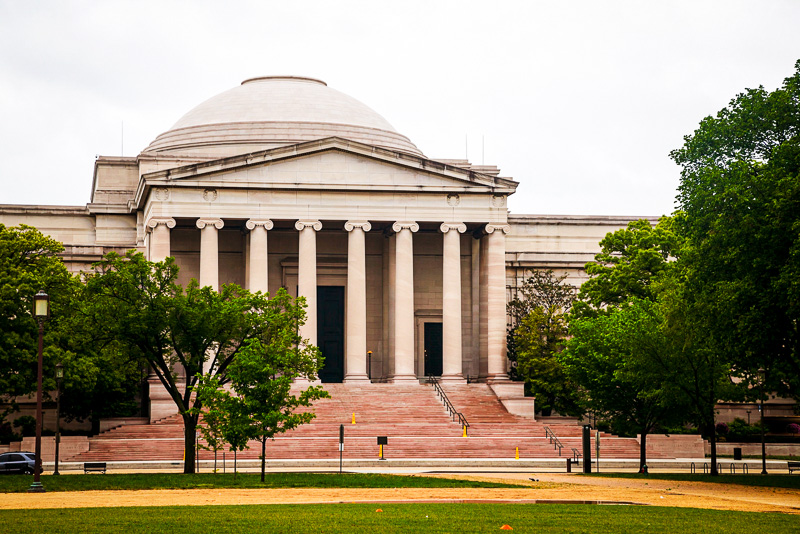
There’s a lot to see at the National Gallery of Art. The gallery has a wide collection of paintings, sculptures, and other artworks from all over the world that date back hundreds of years.
You can see more than 140,000 pieces in the museum, from sculptures, prints, drawings, photographs, and paintings.
You could spend hours walking around and still not see everything. One of the highlights of the museum is the collection of American portraits from the 1800s.
You can also see some world-renown European paintings from the Renaissance period, such as original pieces by Leonardo da Vinci, Giorgione, and Raphael.
Some other popular pieces in the museum are Claude Monet’s Japanese Bridge painting and original sculptures by baroque architect and sculptor, Gian Lorenzo Bernini.
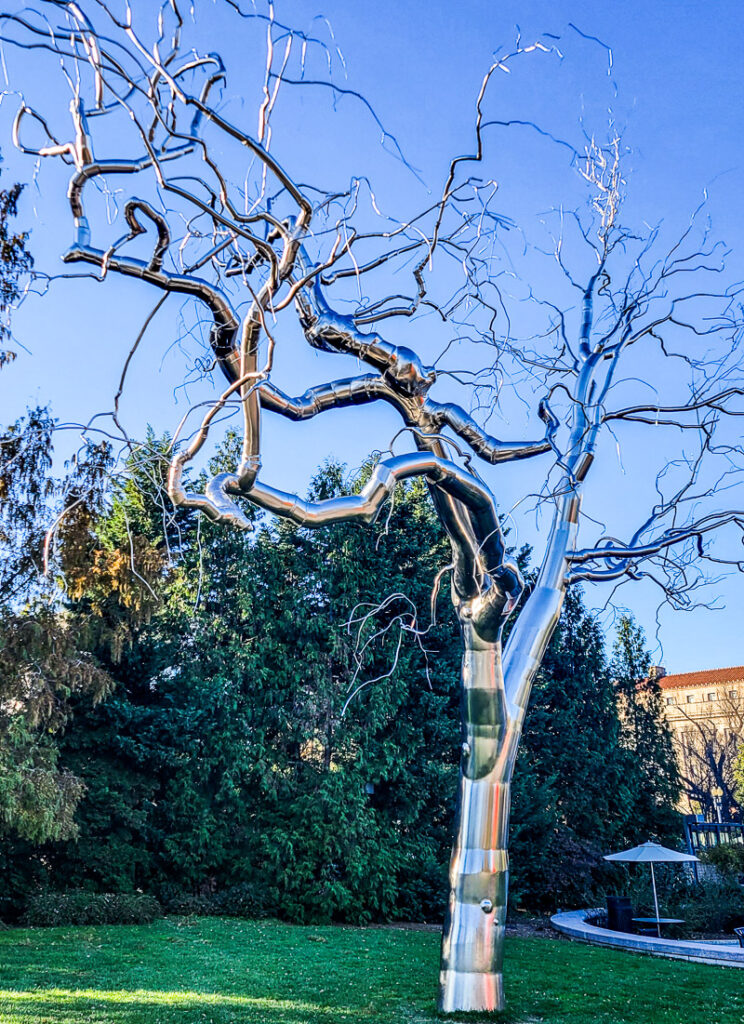

While here, don’t miss the 6.1 acre Sculpture Garden. It’s a wonderful oasis in the middle of a tiring Museum Day, with lovely sculptures to admire. We skipped the art gallery adn just did this.
Learn about the exhibits in greater detail on a small group tour of the National Gallery of Art.
11. Peace Monument
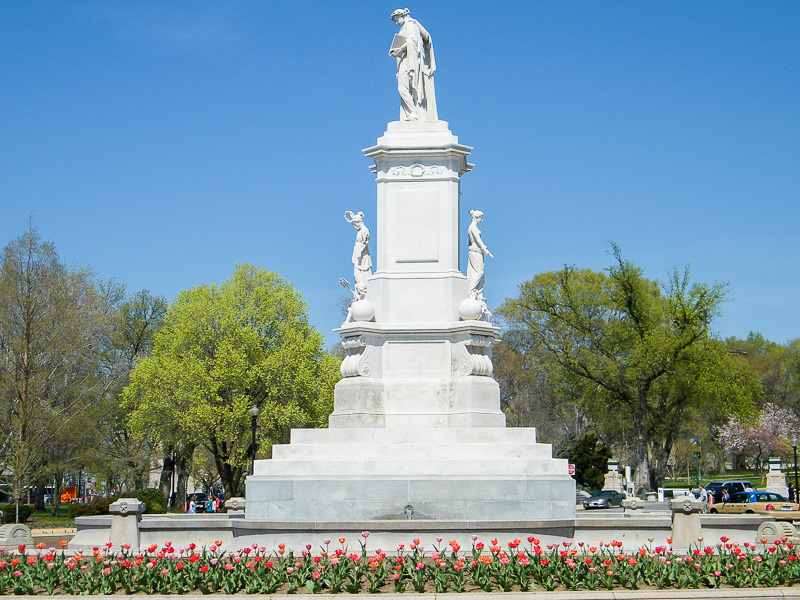
The Peace Monument is a 44-foot-high, ornately detailed marble statue that was built in 1877 to commemorate the naval heroes of the American Civil War and to mark the end of hostilities.
The monument is also a memorial to the ideals of peace and international friendship. The top of the monument features two robed female figures – one is Grief, who hides her face into the shoulder of History.
In History’s hand is a tablet with the words “They died that their country might live” inscribed on it. Below these two figures are two other female figures – Victory and Peace.
The sculptor, Franklin Simmons, was born in Maine but was inspired by the neoclassical style seen in Rome.
12. Ulysses S. Grant Memorial
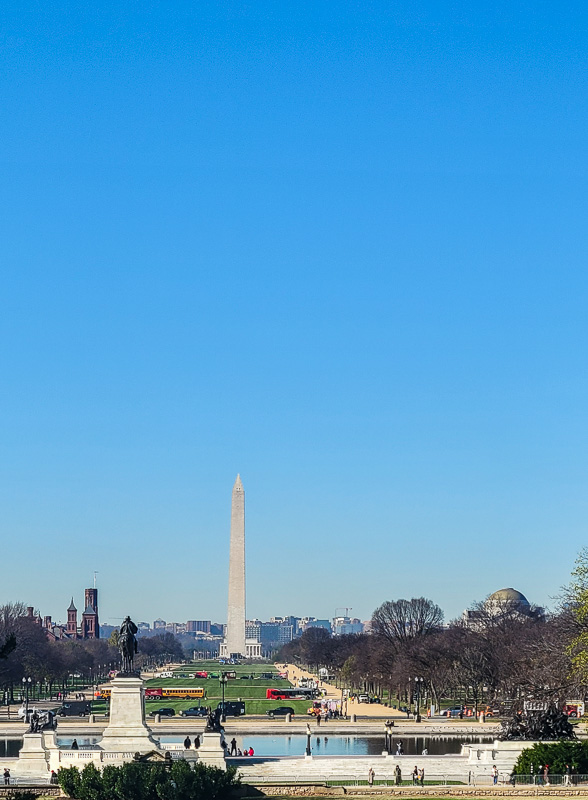
The Ulysses S. Grant Memorial is a bronze statue that was built in 1924 by sculptor Henry Merwin Shrady. The memorial is dedicated to Ulysses S. Grant, a Civil War Commander of the Union Armies and two-term President from 1869-1877.
The memorial features General Grant, who sits on a horse on a pedestal inscribed with bronze reliefs of his army.
The sculpture itself is 5.2 meters tall, making it the largest equestrian statue in the U.S. and the fifth-largest in the world.
13. U.S. Capitol
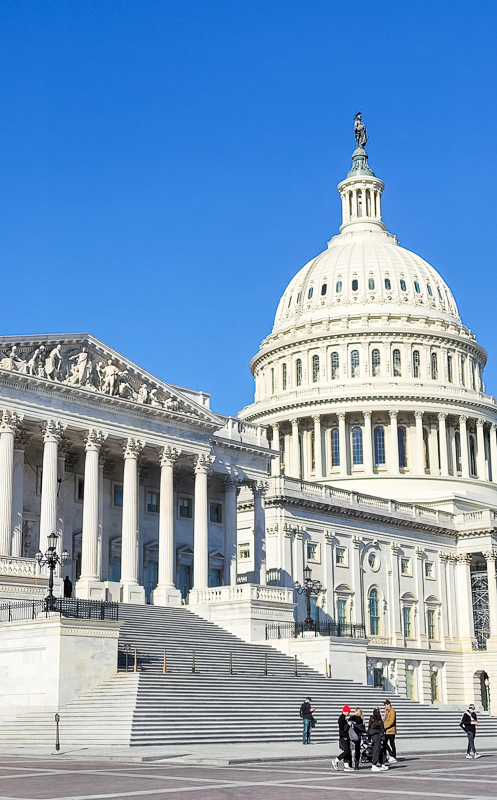
The U.S. Capitol building is one of the most iconic buildings in D.C. that sits on top of Capitol Hill on The National Mall. It’s famed for Renaissance-inspired architecture and a large domed roof.
The United States Capitol Building is the meeting place of the American legislature and congress and is where the Senate and the House of Representatives come together to debate and deliberate political issues.
Visitors can visit the building for free, but they must reserve a spot on a tour. Visitors can also check out the Exhibition Hall which is part of the Visitors Center. This is a museum showcasing interactive exhibits about Congress and the U.S. Capitol.
Here you can learn about the development of the 12 major pieces of legislation, have a go at passing legislation, view the table from President Lincoln’s second inauguration, and take a virtual tour of the building.
You must book in advance as it’s incredibly popular. It’s recommended you book as far in advance as possible as there are only 50 slots per day.
If you want to visit the House and Senate galleries or watch Congress in session, you must book this beforehand by reaching out to your local Congressman.
14. Supreme Court of the United States
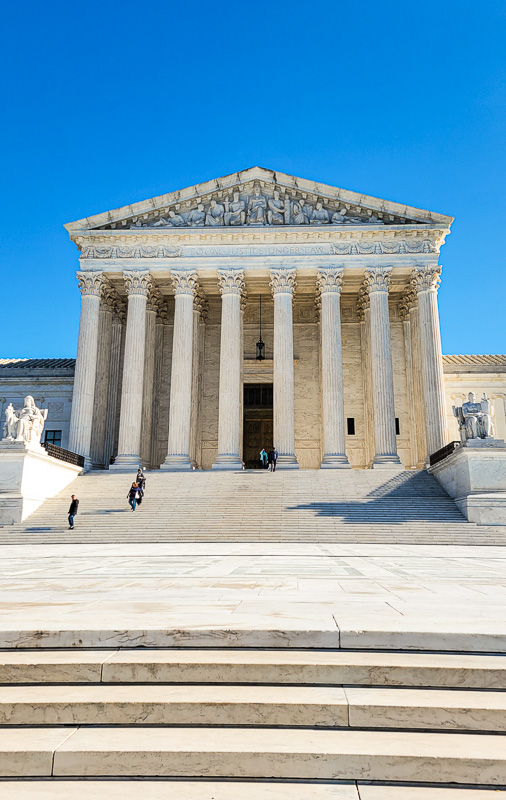
The Supreme Court of the United States is the highest in the USA and is where laws are passed.
The court was established in 1789, and it is responsible for interpreting the Constitution. The court also hears cases that involve issues of national importance.
The Supreme Court is a symbol of justice in America, and it is frequented by tourists from all over the world.
Visitors can visit the plaza, see the courtroom when court is in session (on a first-come, first-served basis), and see the John Marshall statue and portraits and busts of former Justices.
Visitors can attend educational programs and Courtroom Lectures to learn about the history of the court and how it has helped to shape America. The Supreme Court is a must-see for anyone interested in American history or government.
15. Library of Congress
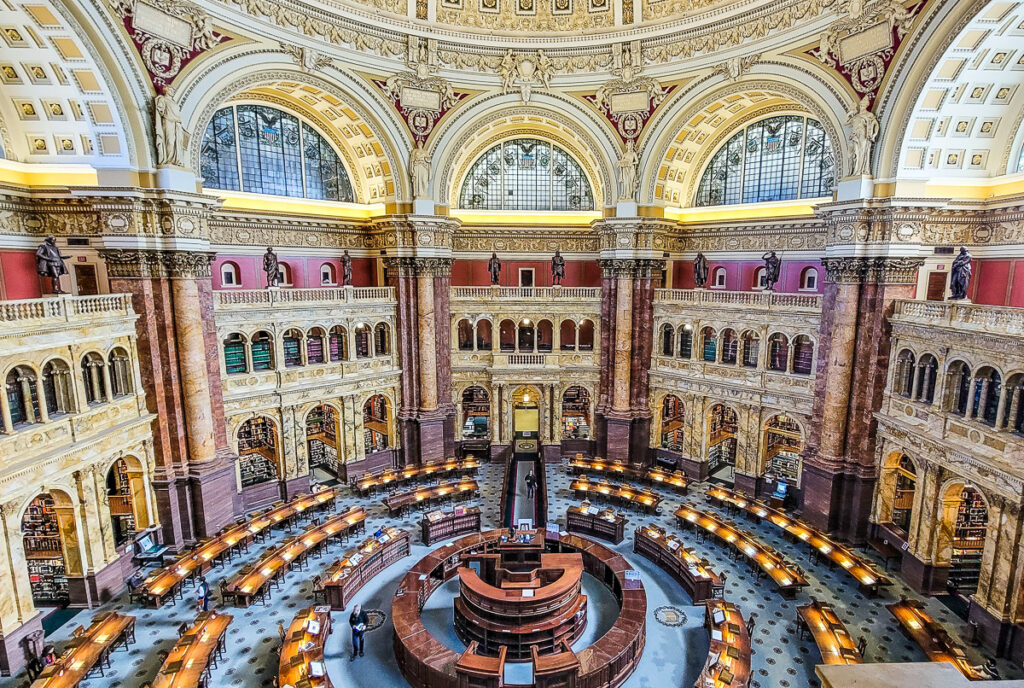
The Library of Congress is truly a sight to behold. Constructed in 1800, it is one of the oldest federal buildings in the United States.
It houses over 173 million items, making it the largest library in the world. It is also home to the world’s largest collection of maps, as well as manuscripts and recordings from every continent.
In addition, the Library of Congress is a research library and is also responsible for copyright regulations in the United States.
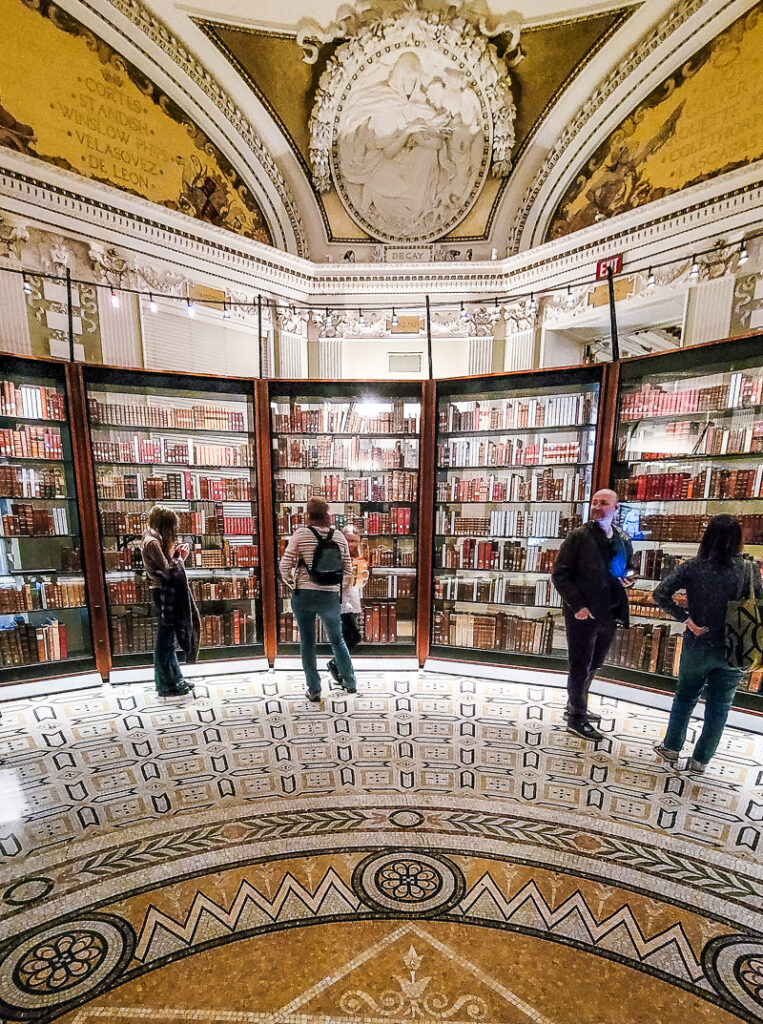
A highlight will be seeing Thomas Jefferson’s personal collection of 6,400 books that founded the Library of Congress. He sold them for $24,000 back in 1800.
For anyone interested in American history and culture, a visit to the Library of Congress is a must. Admission to the Library of Congress is still free, but you will need to make reservations before arriving.
NOTE: You can do a paid guided tour of the Capitol Building and Library of Congress. It also includes a stop at the Supreme Court and the ability to relax as your guide shares the history and insider information. You also then won’t need to worry about reserving tickets in advance or waiting on long lines as your entry is included in the tour. Book your spot here.
16. United States Botanic Garden
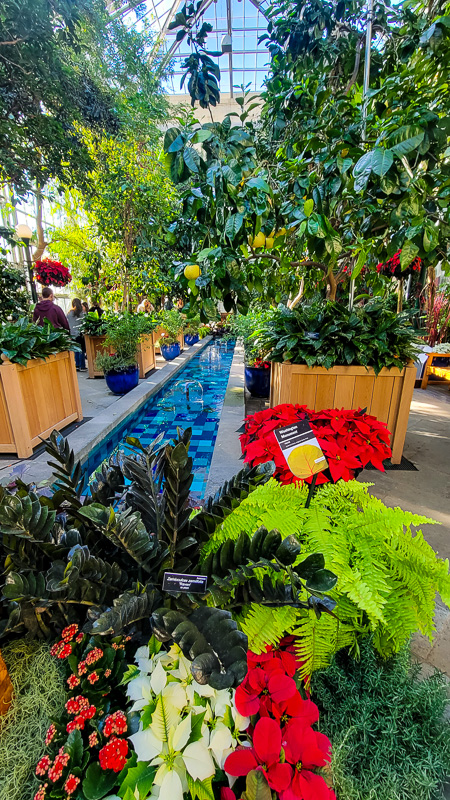
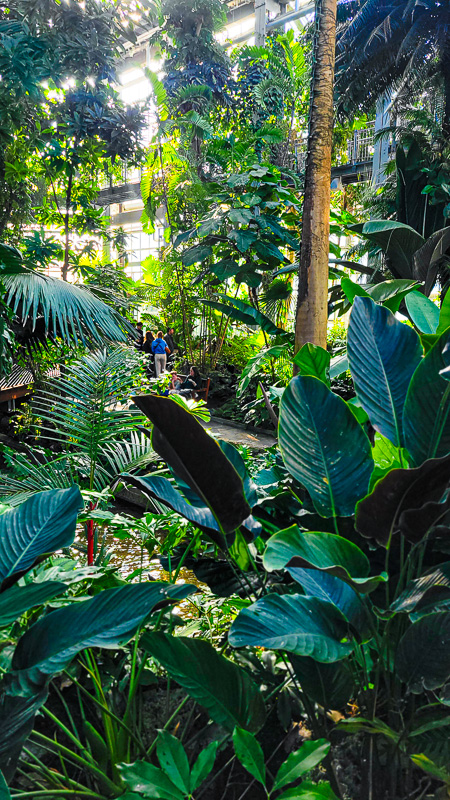
The United States Botanic Garden is a living plant museum founded in 1820 and is one of the oldest botanical gardens in the United States.
It’s home to more than 65,000 plants from around the world. Visitors can see the largest greenhouse complex in the U.S., which was built in 1993. This complex has 34 greenhouse bays and 17 environmental zones.
The rainforest section was spectacular and one of Kalyra’s (our teen) favorite things to do in DC.
17. National Native American Veterans Memorial
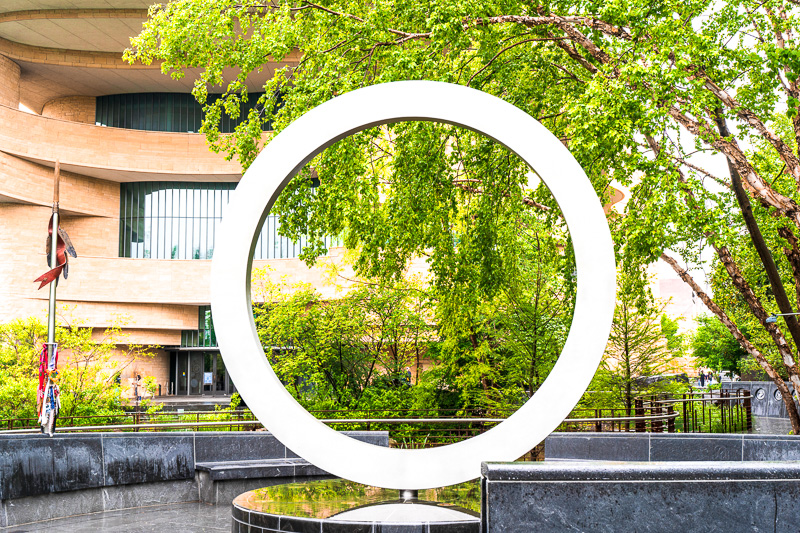
The National Native American Veterans Memorial was built in 2020 to honor the service and sacrifice of Native American veterans.
The memorial consists of a circle of stone sitting in a ring of benches that offer a space for reflection and prayer.
The Memorial honors the contributions of Native American veterans and it stands as a symbol of their courage and strength.
18. National Museum of the American Indian
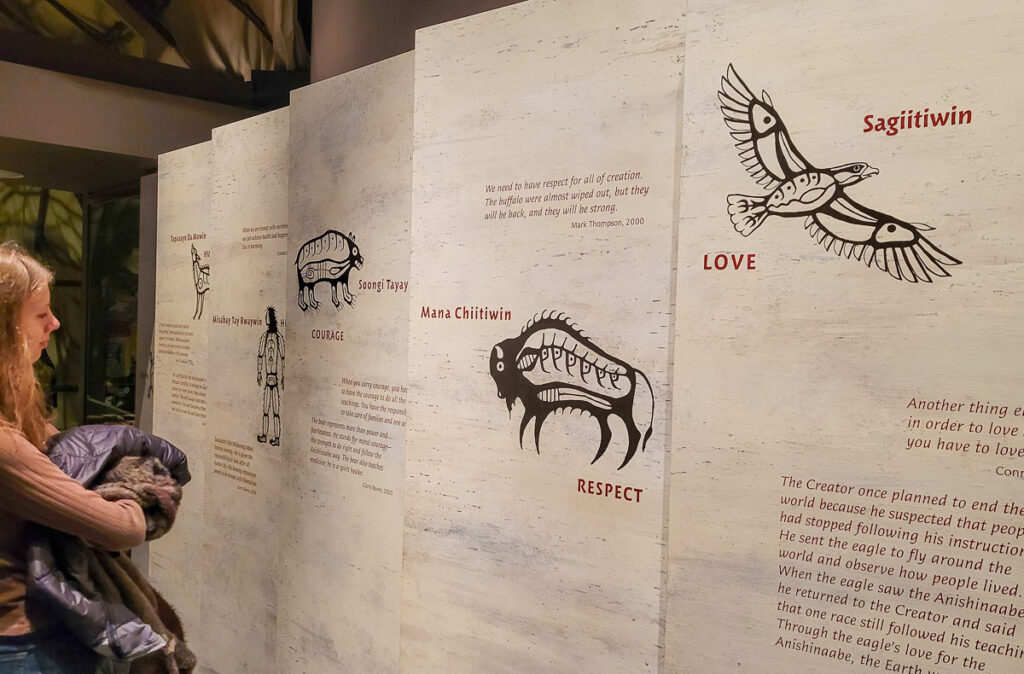
America’s history goes back long before the country was founded by the British more than 500 years ago. If you want to learn about the Native Americans who lived here long before, then you should consider visiting the National Museum of the American Indian.
The museum was built in 2004 and houses a collection of over 825,000 objects, documents, and photographs, making it one of the largest collections of Native American artifacts in the world.
The exhibits tell the story of the Native Americans, from their first contact with European explorers to the present day.
There are also rotating exhibitions featuring contemporary art and related topics.
We loved the 4th floor Our Universes exhibit, which focuses on indigenous worldviews and philosophies related to the creation and order of the universe—and the spiritual relationship between humankind and the natural world.
The museum is free to visit and is one of the best places to learn more about Native American culture.
19. Smithsonian National Air and Space Museum
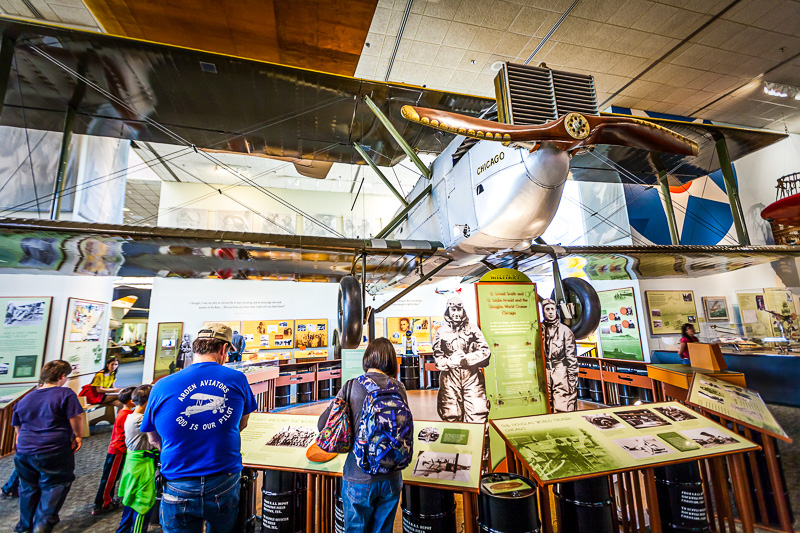
The Smithsonian National Air and Space Museum is a truly awe-inspiring place. As soon as you walk in, it’s easy to see why it’s one of the most popular museums in Washington D.C.
Everywhere you look, there is something fascinating to witness; from the actual Wright brothers’ 1903 Flyer or the original Spacesuit worn by Neil Armstrong, anyone interested in air and space travel will love this museum.
One of the highlights of this museum is the Apollo Lunar Module 2. Being able to witness the technology that went to space really highlights how far we have come as the human race. It makes you feel humble and appreciative of life on Earth.
Make sure to check out the special exhibits that explore multiple topics in greater detail. And of course, make sure to wander through the galleries displaying some of history’s most iconic aircrafts, spacecrafts, and inventions.
Explore the wonders of the Smithsonian Air and Space Museum on this small group tour!
20. Hirshhorn Museum
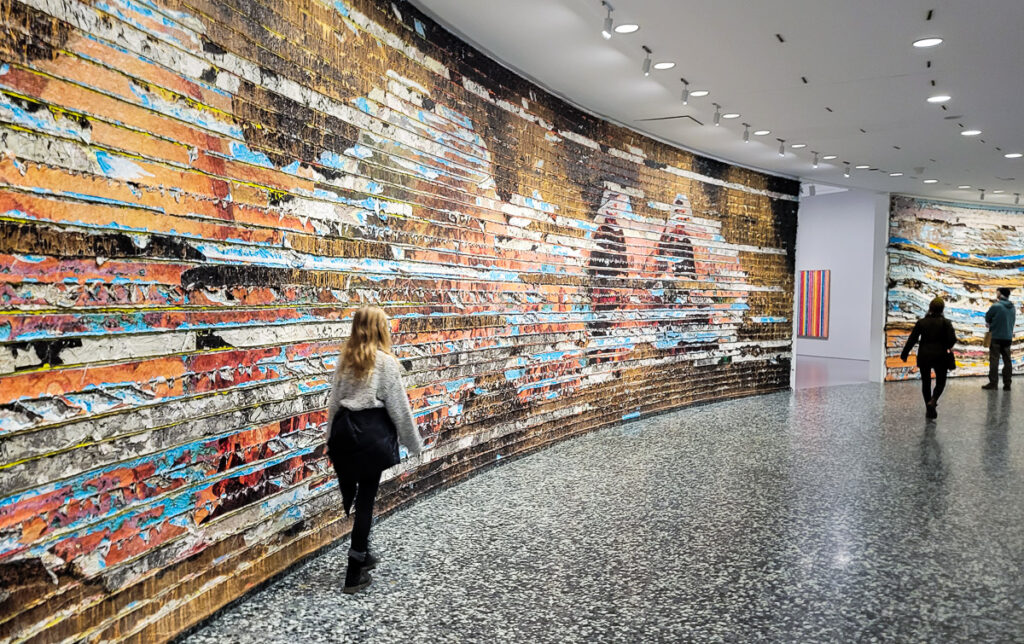
The Hirshhorn Museum is the number one Washington DC museum to visit for fans of contemporary art.
The museum was built in 1960 as a place to store Joseph H. Hirshhorn’s extensive collection of sculptures and modern art, and now features works by famous artists such as Pablo Picasso, Henri Matisse, and Jackson Pollock.
It also hosts a variety of special exhibitions that introduce both emerging and established artists from around the globe.
Don’t mis the Pickett’s Charge panorama by Mark Bedford. It’s a collage of colored paper that turns the historic Gettysburg Pickett’s Charge cyclorama (which we’ve experienced) into a series of eight powerful, abstract paintings. Each is about 45 to 50 feet long and 12 feet high.
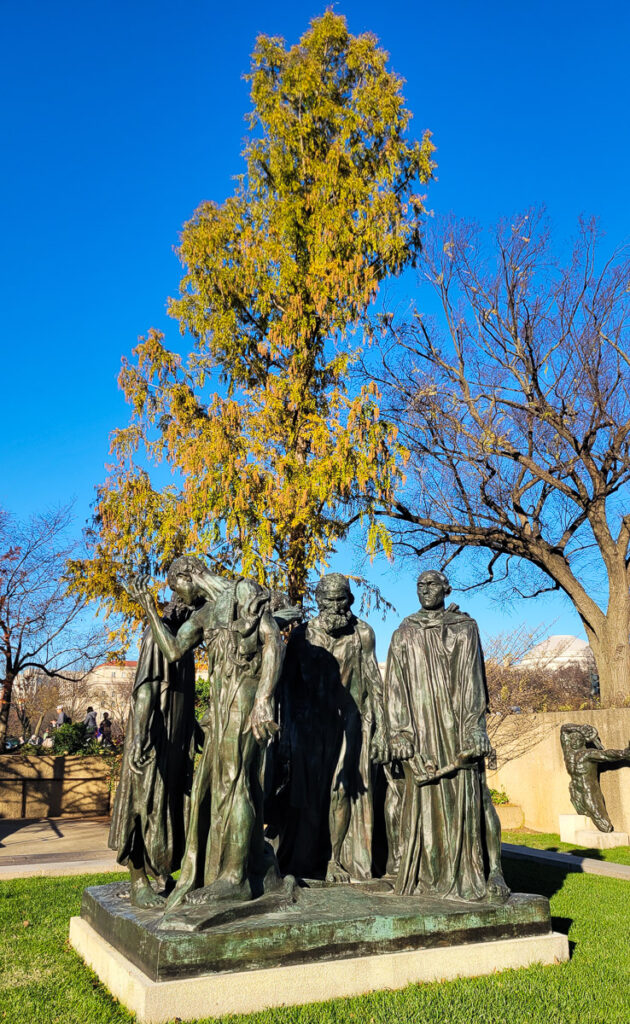
Out the front of the gallery is the 1.3-acre sunken Sculpture Garden which features works from multiple artists. of Auguste Rodin’s most famous sculptures, entitled The Burghers of Calais, can be found here.
With its commitment to presenting transformative art, the Hirshhorn Museum is a must-see for anyone interested in the latest trends in contemporary art.
21. Smithsonian National Museum of African Art
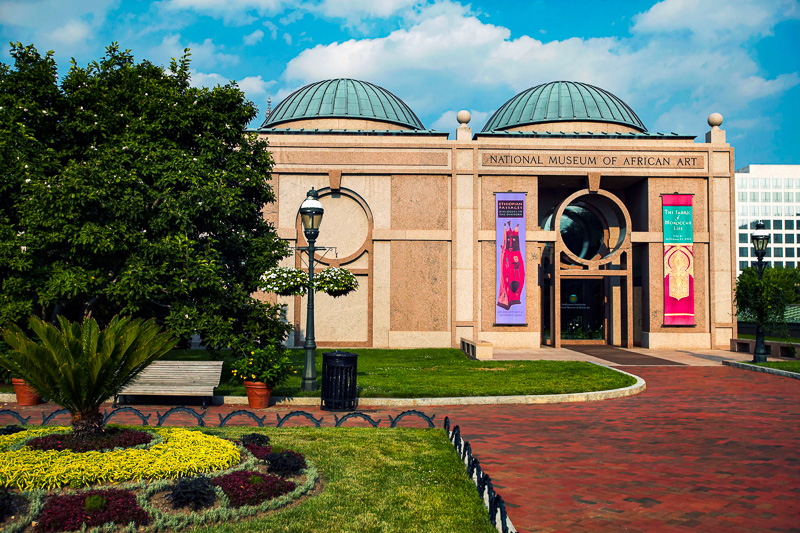
The Smithsonian National Museum of African Art is a breathtaking place that has over time become more than just a space for art.
It was established in 1979 and houses more than 9,000 works of traditional and modern African art, more than 300,000 photographs, and 50,000 books. It was the first institution to ever be dedicated to African art and has the largest collection in the United States.
When you walk through its doors, you are immediately transported to a different time and place. The paintings, sculptures, and artifacts on display offer a glimpse into the culture and history of the African American people.
The museum is also a testament to the power of art to inspire and educate.
22. Smithsonian Castle
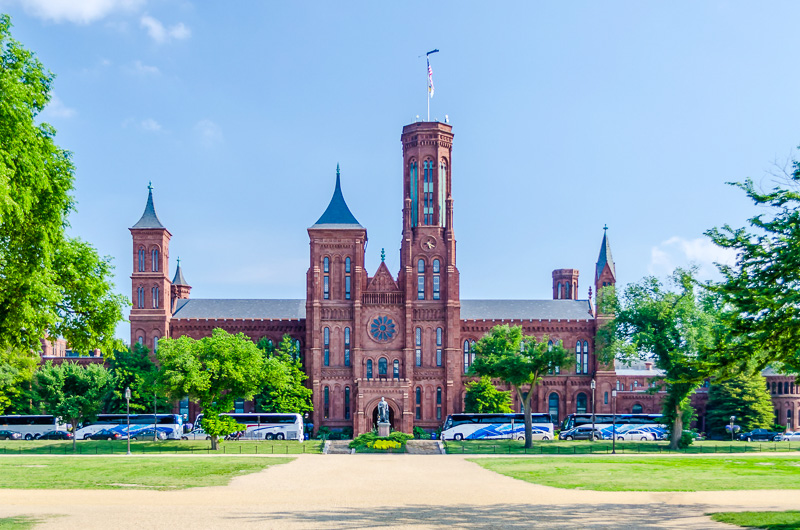
The Smithsonian Castle was built in 1849 and serves as the administrative headquarters for the Smithsonian Institution.
The Castle is an excellent example of Gothic Revival architecture, and its striking silhouette has made it one of the city’s most iconic landmarks.
Today, the Castle houses offices and a visitor’s center that has displays on the history of the Smithsonian Institution.
23. National Museum of Asian Art
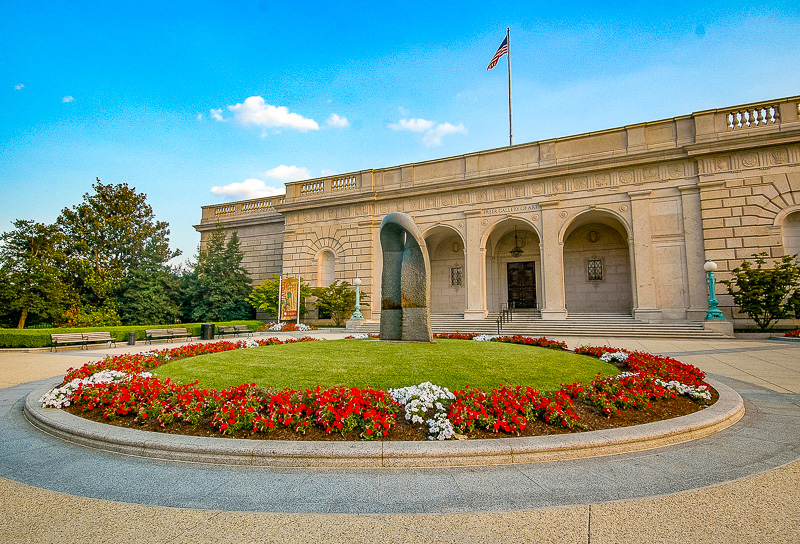
The National Museum of Asian Art was founded in 1982 and houses a collection of more than 45,000 pieces of Asian art, which includes paintings, sculptures, ceramics, and more.
The museum also has a garden with a pond that is home to koi fish. The National Museum of Asian Art represents the cultures of countries such as China, Japan, Korea, India, and Southeast Asia.
It is a place where people can learn about the history and art of Asia. The museum also hosts events and programs that promote understanding and appreciation of Asian cultures.
24. National Sylvan Theater
The Sylvan Theater was built in 1916 and is an outdoor replica of an ancient Greek amphitheater used for performances, operas, and ballets.
The theater has a large wooden stage, surrounded by a graded depression in the earth. It can seat around 10,000 people.
It was the first federally funded theater in the U.S.
25. United States Holocaust Memorial Museum
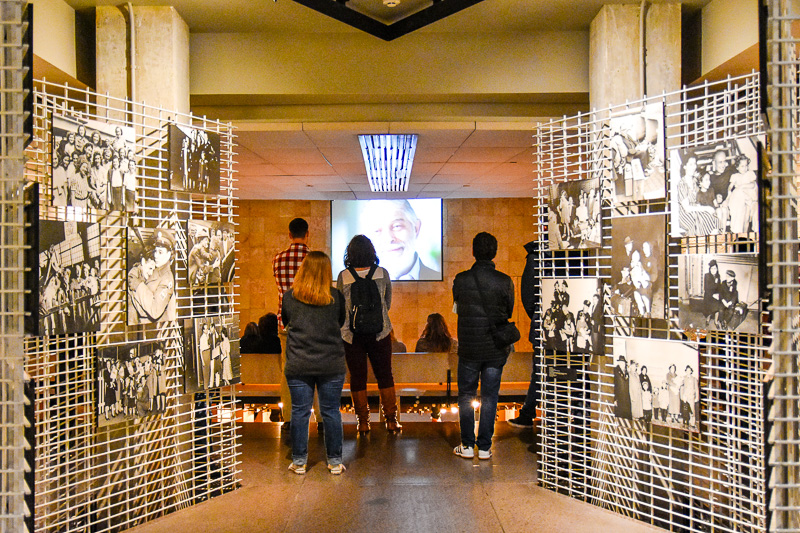
Although technically just off The National Mall on Independence Avenue, the Holocaust Museum is still a popular attraction on The National Mall.
The U.S. Holocaust Memorial Museum serves as a reminder of the devastating consequences of unchecked prejudice and violence.
It’s hard to imagine what life was like for so many people before and during the holocaust and visiting this museum helps to understand the magnitude of the tragedy that occurred.
Upon entering the building, you are greeted with some emotionally triggering artifacts that illustrate the stories of those affected by discrimination and violence.
There are numerous interactive exhibits that aim to create a better understanding of what happened during this period in history.
You can also see numerous testimonies from survivors who share their stories, which can be quite powerful to witness firsthand.
You may leave feeling saddened about the events of the past, but it’s an important museum that reminds us all why such tragedies must never be repeated.
26. John Paul Jones Memorial
The John Paul Jones Memorial was built to commemorate the life of the American naval hero, John Paul Jones.
It was completed in 1912 and features a bronze statue of Jones on a granite pedestal with a base relief depicting the Battle of Flamborough Head.
The John Paul Jones Memorial represents the bravery and patriotism of the American Revolution.
27. World War II Memorial
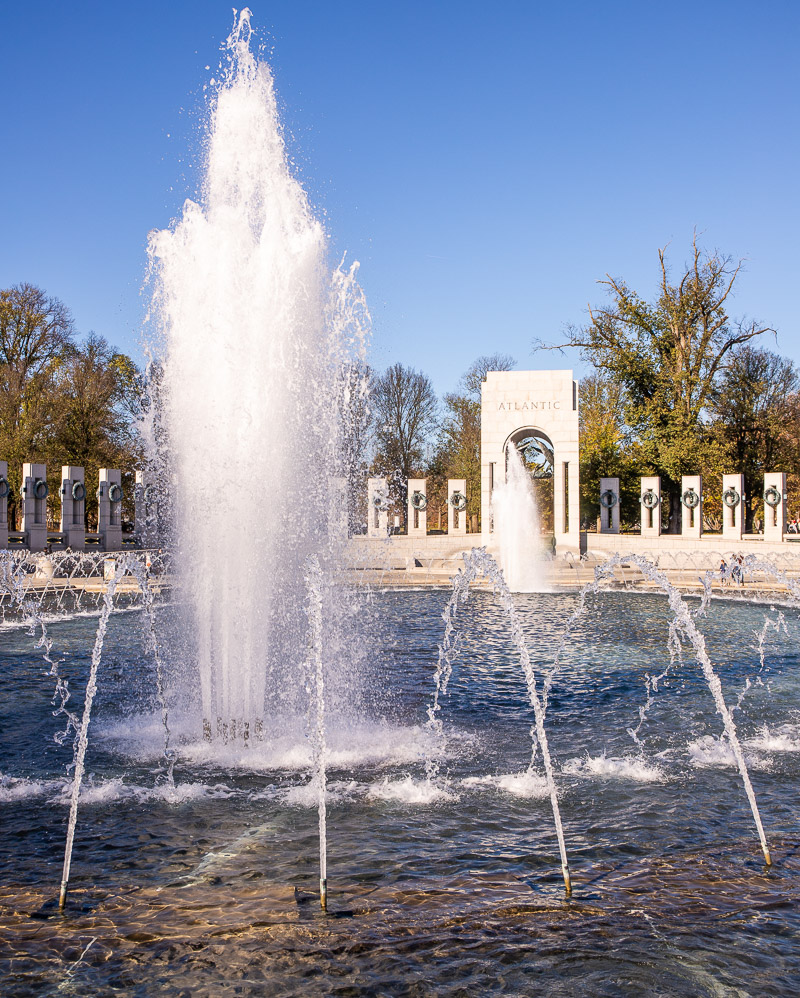
The World War II Memorial was built in 2001 to honor the 16 million members of the United States armed forces who served during World War II, as well as the more than 400,000 people who lost their lives.
The memorial consists of a central plaza fountain surrounded by a colonnade of 56 pillars, each representing one of the states or territories that were part of the United States during the war.
The memorial also includes a “Wall of Remembrance” with the names of all those who lost their lives in the war.
The World War II Memorial is a powerful reminder of the sacrifices made by so many during one of the darkest periods in our history.
28. Martin Luther King Jr. Memorial
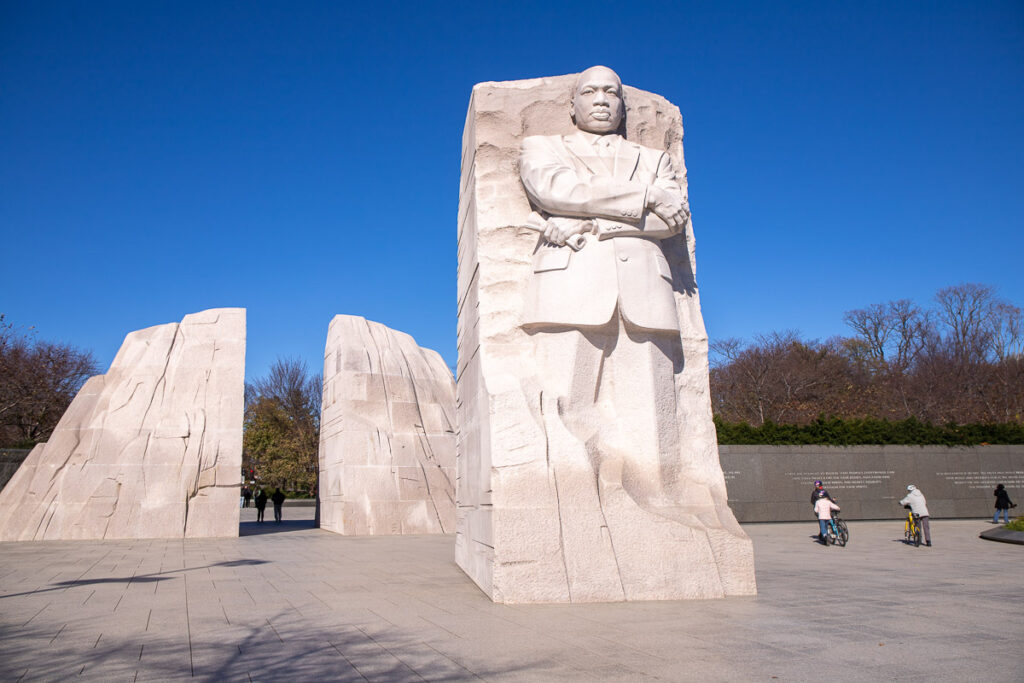
The Martin Luther King Jr. Memorial is one of the most popular tourist destinations in the city. The monument was built in 2011 and stands over 30 feet tall.
It represents King’s legacy as a leader of the Civil Rights Movement and features a quotation “Out of the mountain of despair, a stone of hope,” from his “I Have A Dream Speech.”
Visitors to the monument often leave flowers or other tributes at the base of the statue. The memorial is a powerful reminder of King’s commitment to equality and justice for all people.
29. Korean War Veterans Memorial
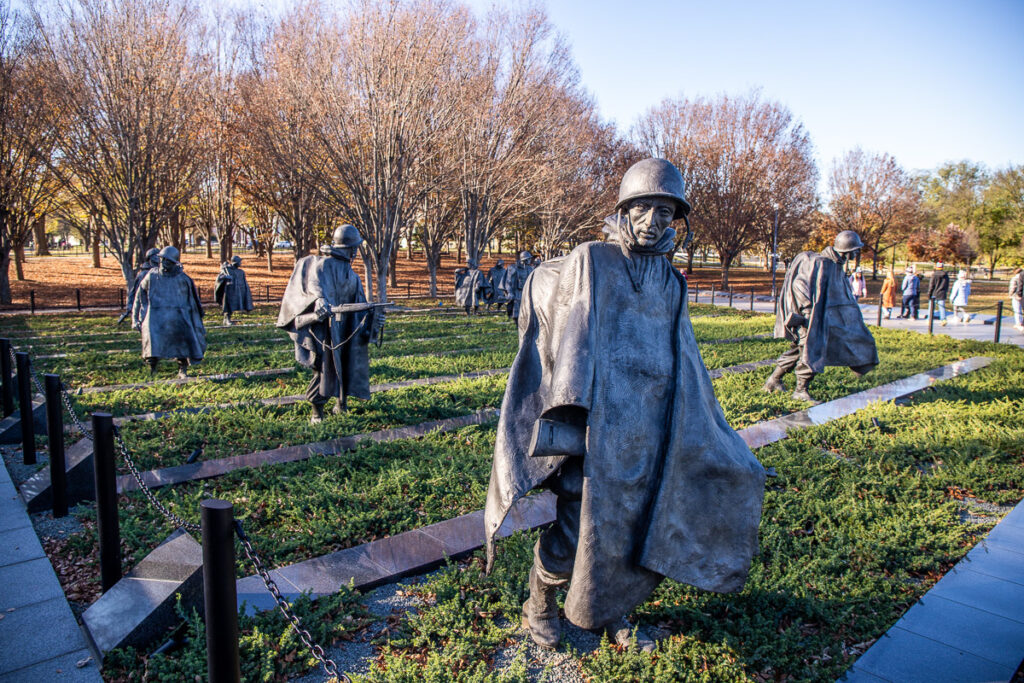
The Korean War Veterans Memorial was built in 1995 and represents the sacrifices made by the soldiers who fought in the Korean War.
The memorial consists of a Wall of Remembrance, which has the names of over 36,500 soldiers who lost their lives in the war, and a statue of 19 soldiers representing different branches of the military.
The statue is meant to represent the camaraderie and diversity of the soldiers who served in the Korean War.
The memorial is also intended to remind visitors of the importance of freedom and democracy.
30. John Ericsson Memorial
Built in 1927, the John Ericsson memorial commemorates Swedish-American inventor John Ericsson, who designed the USS Monitor, a warship that played a key role in the Union victory during the American Civil War.
The memorial features an allegorical group, behind a statue of Ericsson sitting on a pedestal.
31. George Mason Memorial
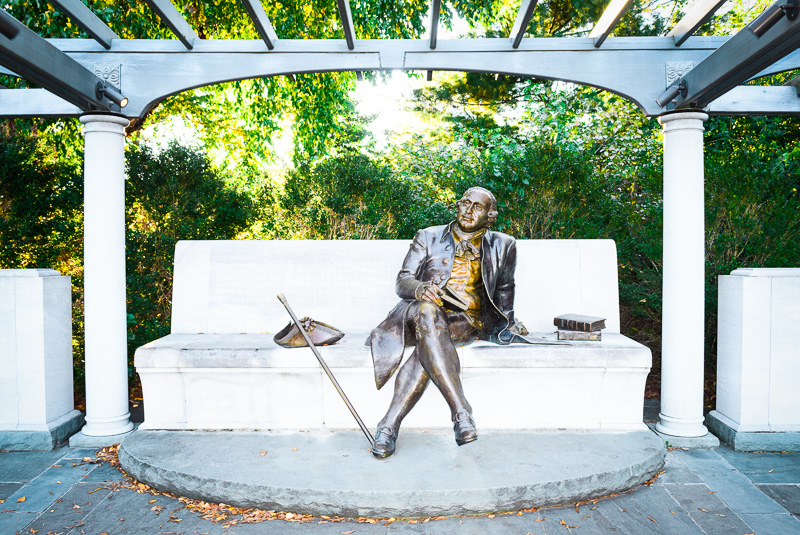
The George Mason Memorial was built in 2002 and commemorates the life of George Mason, a founding father of the United States and writer of the Virginia Declaration of Rights.
The memorial features a bronze statue of Mason sitting on a bench. There’s also an inscription of his most insightful words.
32. Franklin D Roosevelt Memorial
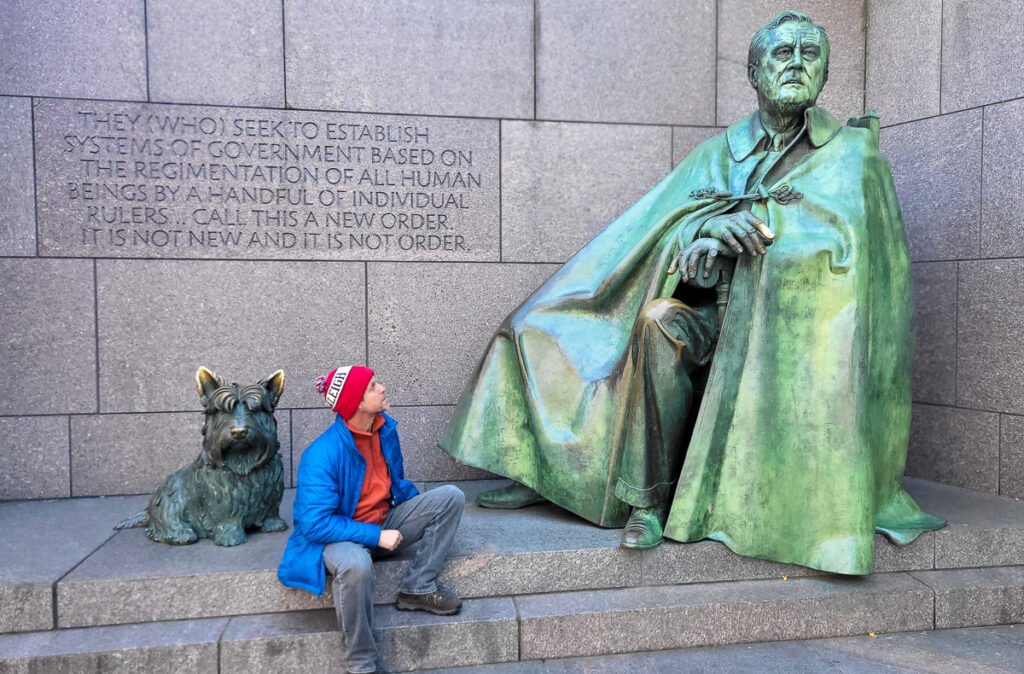
Definitely the most unique of the memorials is the one in honor of President Franklin Delano Roosevelt’s four terms in office from the Great Depression to World War II.
I loved its tranquil nature set back into the forest on the banks of the Tidal Basin with waterfalls, statues of FDR (with his dog) and his wife Elanor and famous quotes etched into the brown marble walls.
33. Thomas Jefferson Memorial
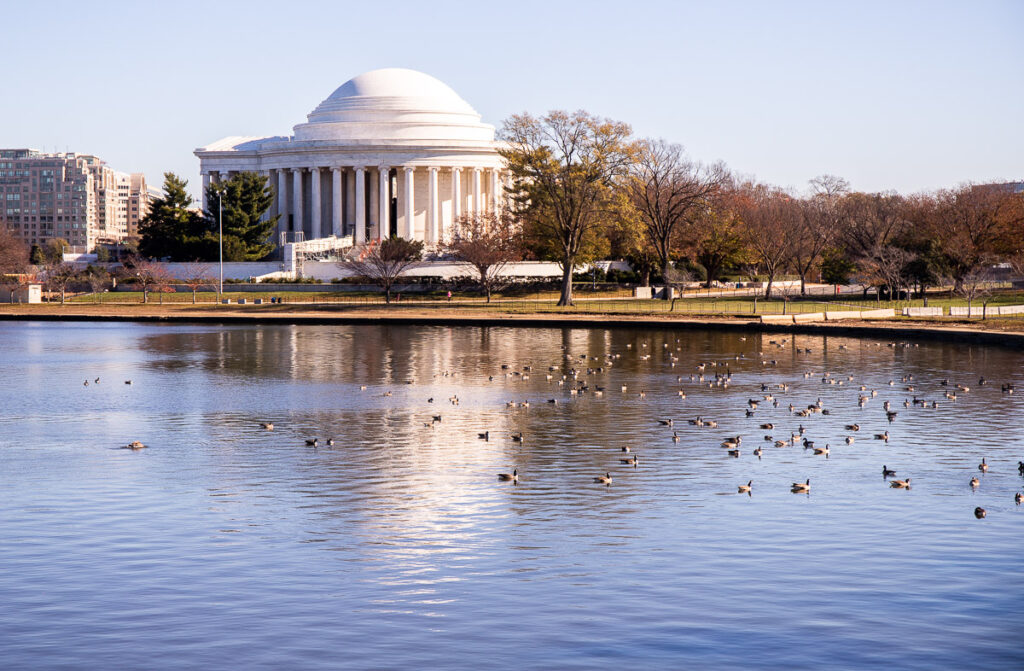
The Thomas Jefferson Memorial is a neoclassical structure that was built in 1943 to honor the 200th anniversary of the birth of the third president of the United States.
The memorial includes a statue of Jefferson inside a neoclassical columned room that resembles the Pantheon in Rome. Surrounding the statue are some of the most famous quotes from his speeches.
Visitors can also enjoy the beautiful views of the surrounding area, including the Potomac River and the U.S. Capitol building.
FAQs About Visiting The National Mall
Here’s what people usually ask us about visiting The National Mall…
How long should I spend at the National Mall?
You should plan to spend at least a full day at The National Mall. There are several museums to see as well as the monuments, and each should be given a couple of hours minimum to see. If you have time on your side, you should definitely spend at least two full days exploring. But it’s possible to see the highlights in 24 hours.
How much does it cost to go to the National Mall in Washington, DC?
It’s completely free to visit The National Mall in Washington D.C. and many of the attractions are free to visit too. You will need to reserve a timed ticket for the U.S. Capitol Building, Ford’s Theatre National Historic Site, and the Washington Monument.
How long does it take to walk around the whole National Mall?
If you plan to walk the entire 5-mile loop, then it will take you around 1.5-2 hours without stopping.
Before You Go
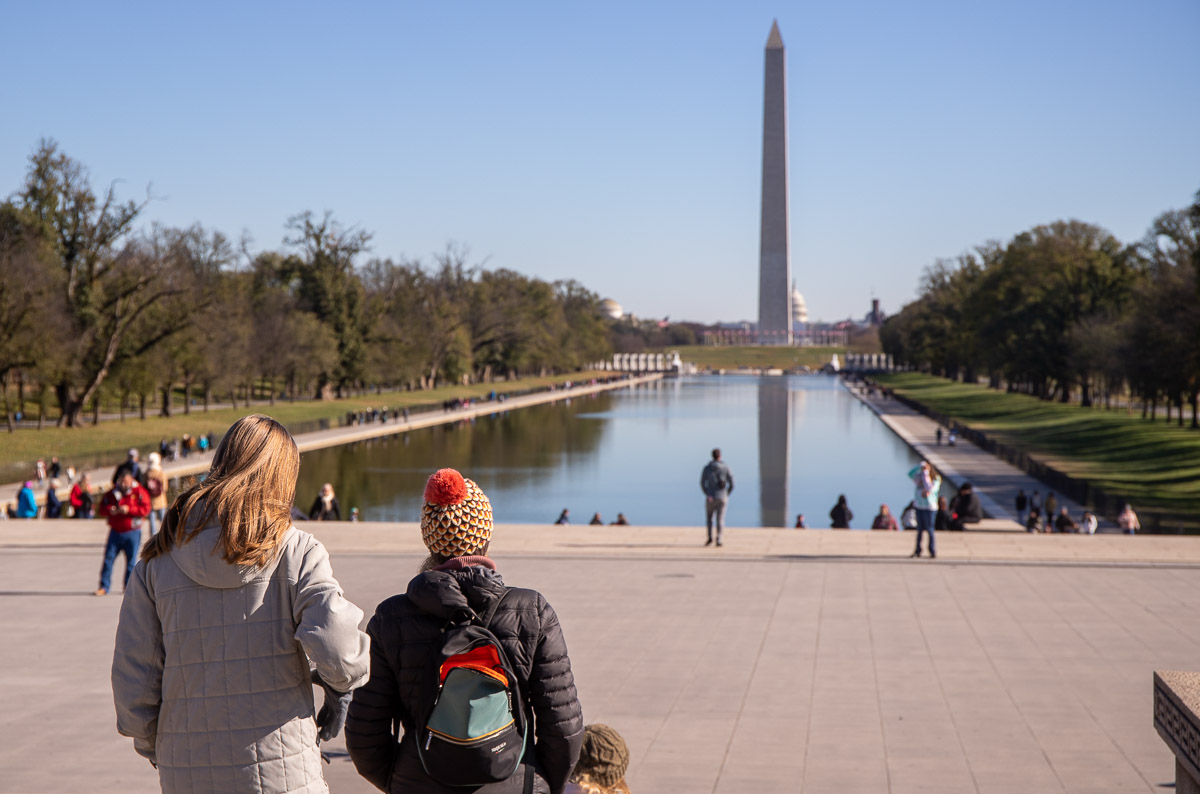
So there you have it, this is everything you need to know about visiting The National Mall in Washington D.C. and as you can see, there is a lot to see and do.
The National Mall is one of the top things to see in DC and should not be skipped on any Washington itinerary.
So before you go, make sure you wear comfortable shoes and clothing as you will be doing a lot of walking (or cycling if you take our advice). Pack plenty of water and snacks, and be sure to take a moment to sit and contemplate while you’re visiting.
The Mall was the setting behind many of America’s most iconic events. It’s where African Americans gathered to watch Martin Luther King Jr. give his speech, where 5,000 women marched for their rights to vote, and where 500,000 people gathered to protest the Vietnam War, for example.
Don’t just rush through the park. Take time to think about the events that took place here and what monumental accomplishments were made as a result of them.
Where to Stay in Washington DC
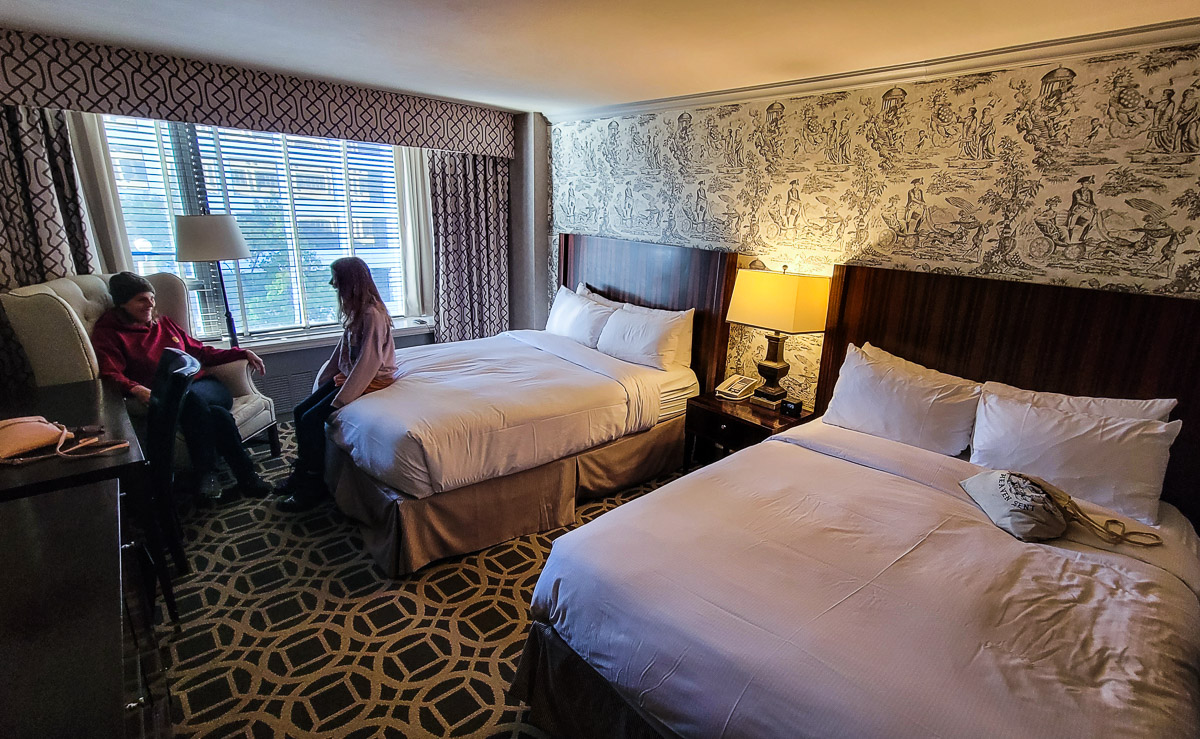
When choosing accommodation for Washington DC, it’s best to look for a hotel within walking distance to the National Mall. Especially, if your stay is short and it’s most focused on the popular DC attractions in this area. If traveling a little further out, you’ll also want accommodation close to a Metro station. Parking is at a premium in DC, so we don’t recommend driving around.
Here are some hotel recommendations from us:
- We stayed at The Madison Hotel on 15th street only a couple of blocks away from the White House. We could walk everywhere – Georgetown was even a 3-minute walk from our hotel. The room was comfortable but most important of all, was the convenient location. Book your stay here.
- The Duo Nomad Hostel is a great budget accommodation option for those wanting to stay in the city.
- Previously, we’ve stayed at The Hilton Garden Inn in the Georgetown area / west end of downtown when we visited the White House , which met all our needs as a tourist AND business traveler.
- I also love the look of the Kimpton Banneker – its our favorite hotel brand and within walking distance to the National Mall. You will have amenity fees at this hotel however, so will need to factor that into your budget.
- Click here if looking for vacation rentals.
More Washington DC Travel Tips
- 26 Cheap and Free Things to Do in Washington D.C. for Budget Travelers in 2023
- How to spend 48 Hours in Washington DC (best things to see and do)
- 3 Day Washington DC Vacation Itinerary (With Teens & Tweens in the Holidays)
- What to Do in Washington DC (local’s tips)
If you found this guide to the National Mall in DC helpful, please consider sharing it. You can use the image below to share to Pinterest.
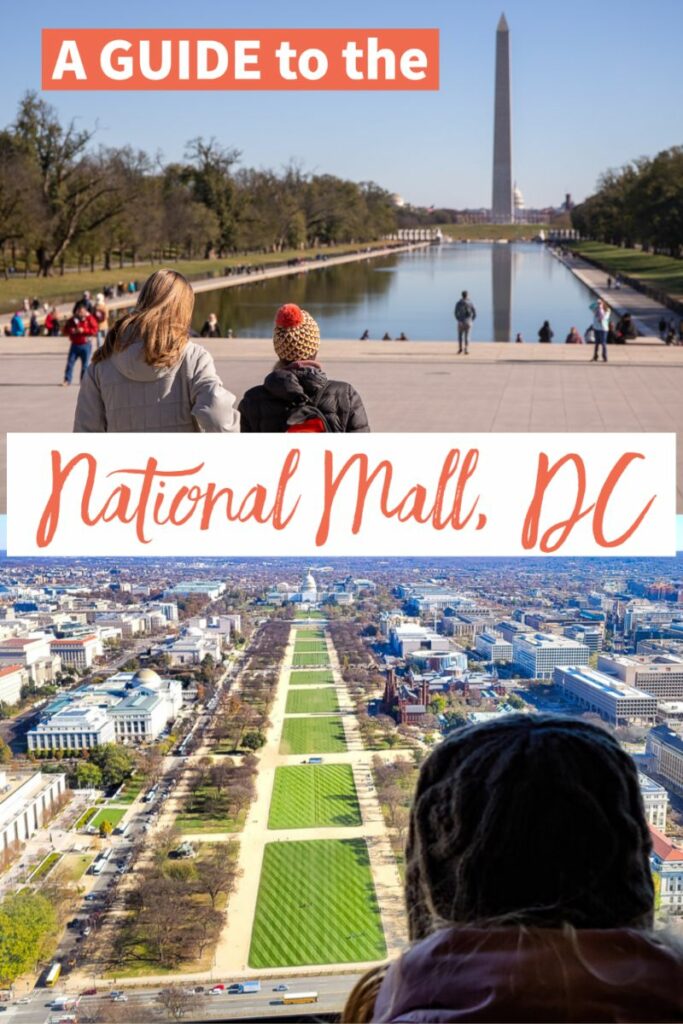
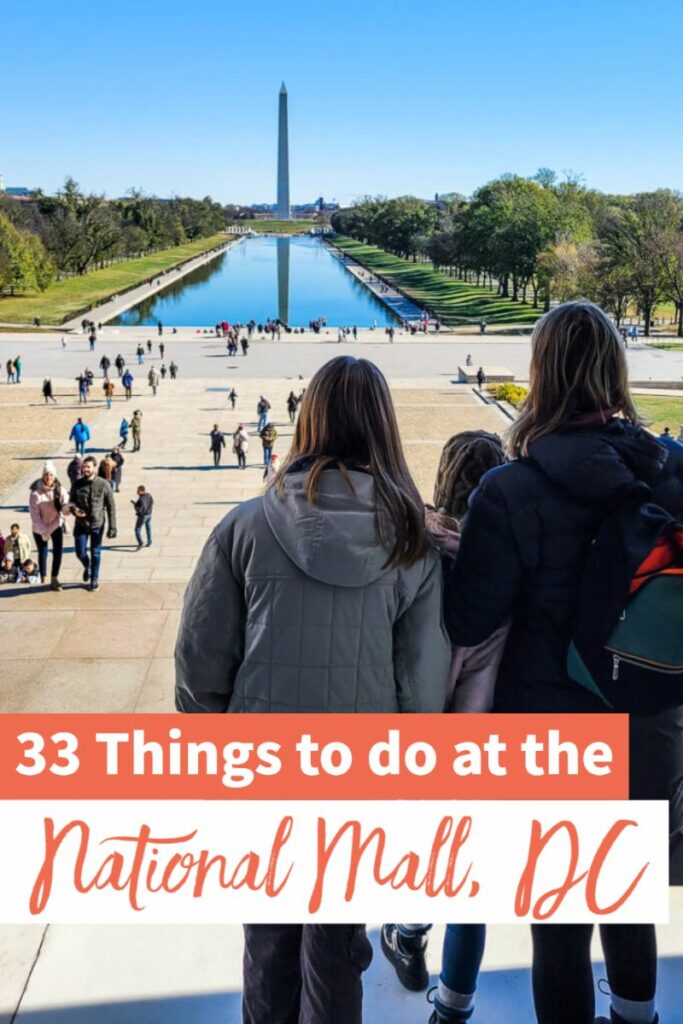

0 Comments